Carmel Institute Events
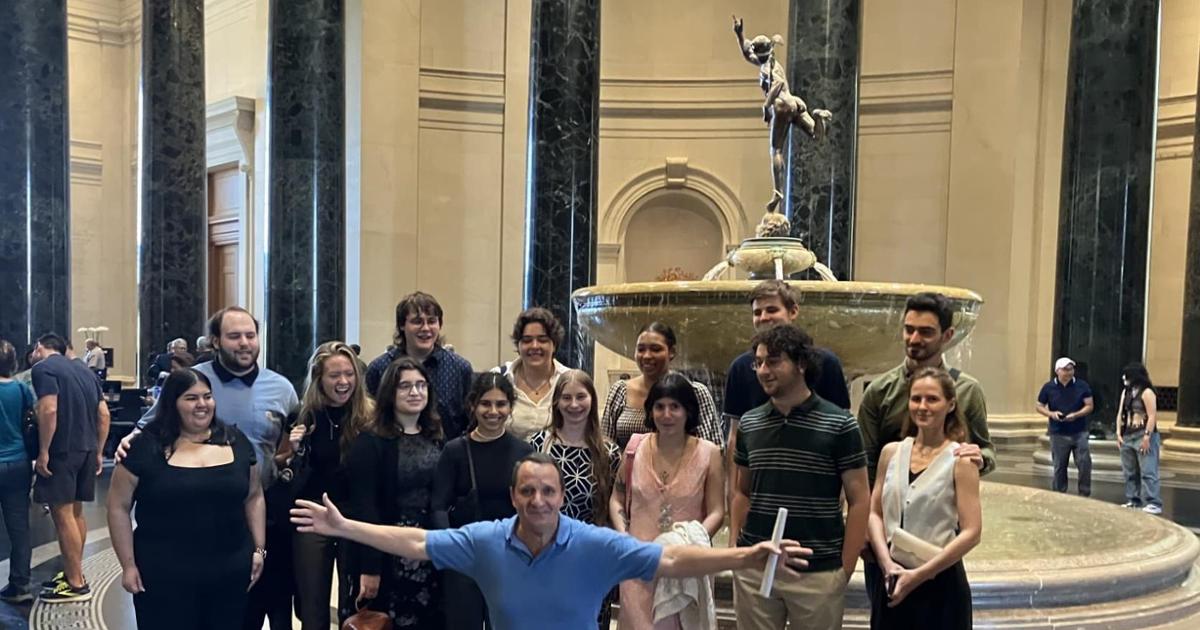
Catherine the Great treasures at the National Gallery of Art
On Saturday, September 28, 2024, The Carmel Institute organized a trip to the National Gallery of Art. Professor Fedyashin gave the students a 90-minute tour of the paintings acquired by Andrew Mellon from the Hermitage Museum in 1930-31. Of the twenty-one paintings that Mellon purchased, fifteen are currently on display.
Museum visits, concert attendance, and class-trips have been part of the Carmel Institute’s programming since its inception. As Professor Fedyashin has always reminded his students, although our knowledge about the past depends primarily on reading, history must also be walked, seen, touched, smelled, and tasted.
The tour combined the biographies of the artists, the history of Western art, and the story of the paintings’ acquisitions. The group explored Jan van Eyck’s The Annunciation (c. 1434), Sandro Botticelli’s The Adoration of the Magi (c. 1478), Pietro Perugino’s Crucifixion (c. 1482), Raphael’s Alba Madonna (c. 1510), Titian’s Venus with a Mirror (c. 1555), Sir Anthony van Dyck’s Isabella Brants (1629); Rembrandt’s Man in Oriental Costume (c. 1635), A Polish Nobleman (1637), A Woman Holding a Pink (1656); and finally Jean Siméon Chardin’s The House of Cards (c. 1737). The students also read two chapters of Richard Wortman’s Scenarios of Power, which placed the images and acquisition history into the context of the socio-political symbolism during Catherine the Great’s reign.
Dr. Fedyashin told the students about each painting’s acquisition by the Romanovs. All the paintings explored during this trip were Catherine the Great’s purchases. The French philosopher Denis Diderot was the most prominent of her agents in Europe. He was directly involved in negotiating the purchase of Rembrandt’s paintings in the 1770s. Chardin’s quiet domestic scene was also his recommendation. The addition to the Winter Palace of the Hermitage building that Catherine commissioned not only reflected the new neoclassical architectural trend, but also pointed to another side of her character—her love for quiet spaces to read and seek shelter from the Imperial Court. Although not a masterpiece on the scale of the other seven paintings, Chardin’s canvas with its lone card player on a minimalist background reflected Catherine’s desire for quiet contemplation.
The trip was a visual component of a holistic experience that stays with students of history for much longer. After the tour, the group went to lunch. Engaging with the history of art on the page and in the museum helped to open young minds to the importance of art history as well as the great legacy of American philanthropy.

Students Discover Byzantine Treasures Here in DC
On Saturday, August 31 and September 7, 2024, the Carmel Institute organized tours of one of Washington’s most unique museums, Dumbarton Oaks. Dr. Fedyashin guided students through an exploration of Dumbarton Oaks permanent Byzantine art collection. The group examined and discussed the evolution of classical art from the Hellenic period into the Roman Empire and then the Byzantine era. Dr. Fedyashin pointed out the influence of Orthodox Christianity on the portrayal of the human figure through sculpture, sarcophagi, and religious art. The students also examined the highlights of the museum’s current special exhibit “Striking Designs: Communicating Through Coins.”
Museum visits, concert attendance, and class-trips have been part of the Carmel Institute’s programming since its inception. As Professor Fedyashin has always reminded his students, although our knowledge about the past depends mostly on reading, history must also be walked, seen, touched, smelled, and tasted.
After the tour, the students went to lunch at Divan Café, where they sampled Turkish and Mediterranean cuisine. Experiencing the classical and Byzantine through exhibits helped to open young minds to the wonders of history as well as the great legacy of American philanthropy.
For more about the Dumbarton Oaks, please visit https://www.doaks.org/
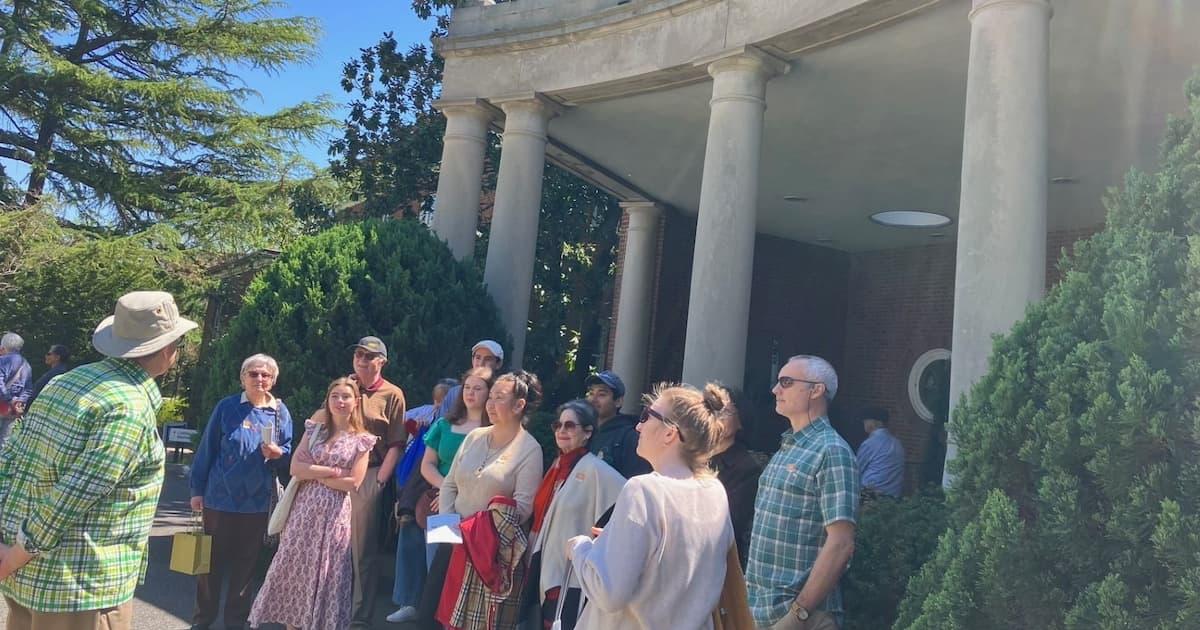
Students View Russian Art in Person
On Sunday, April 11, 2024, the Carmel Institute organized a student trip to the Hillwood Estate, Museum & Gardens. The group explored Marjorie Merriweather Post’s superb collection of Russian imperial porcelain and jewelry, which she acquired while accompanying her third husband Joseph Davies to Moscow between 1937 and 1938 after President Roosevelt asked him to serve as ambassador to the USSR.

Exploring Great War Themes at the Wilson House
On Saturday, April 6, 2024, The Carmel Institute organized a trip to the Woodrow Wilson House on S St in Washington’s Kalorama neighborhood. Tour guide David Steigman and Professor Fedyashin gave the students a 90-minute tour of the house during which they explained how Wilson and Lenin, who never met, became existentially connected due to the maelstrom of the Great War.
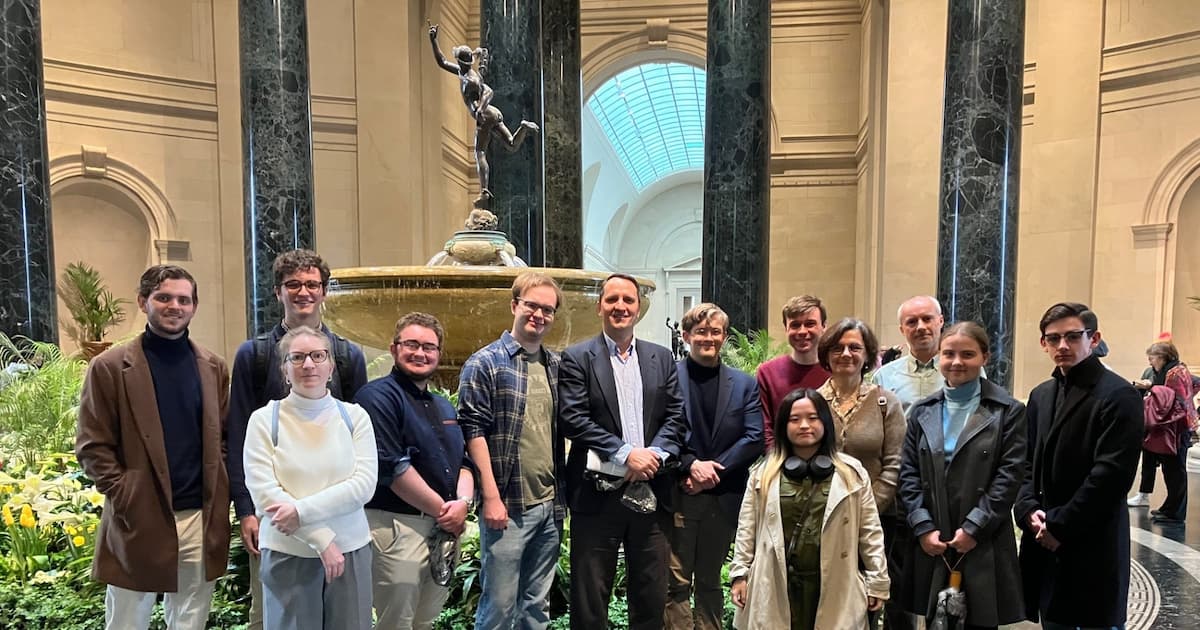
Experiencing Russian Hermitage Paintings at the National Gallery of Art
On Saturday, March 23, 2024, Professor Fedyashin guided students and several faculty members through the National Gallery of Art. His tour combined the biographies of the artists, the history of Western art, and the story of how the Smithsonian came to possess 21 paintings that were once in the Russian tsar's collection.
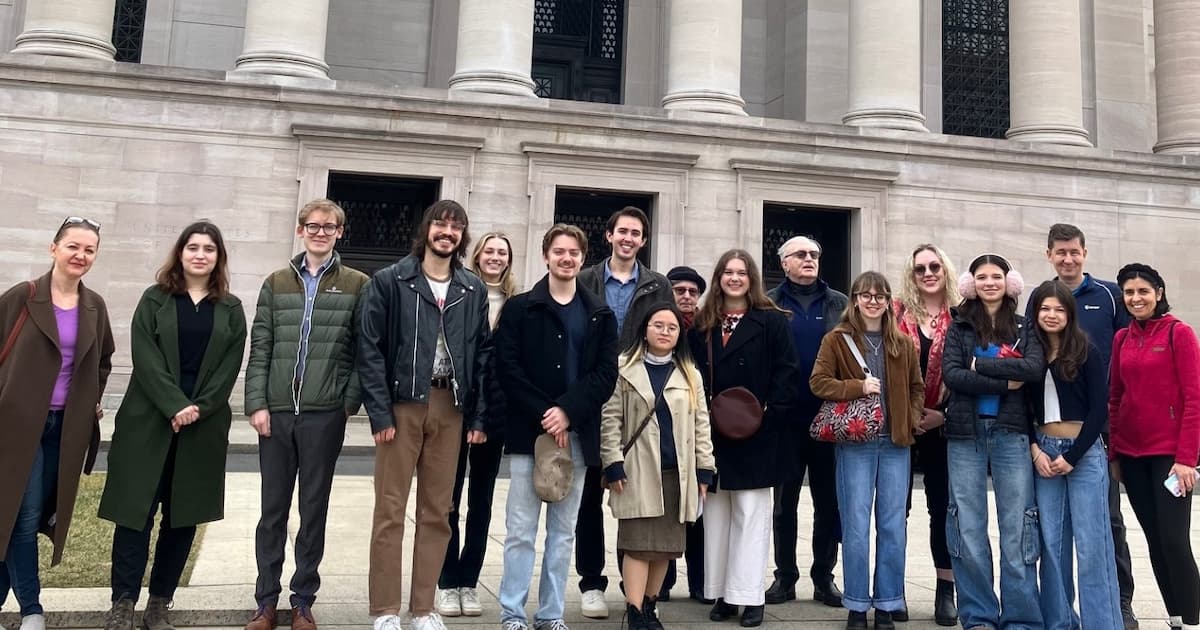
Students See and Learn about Russian Hermitage Paintings at the National Gallery of Art
On Saturday, March 2, 2024, The Carmel Institute organized a trip to the National Gallery of Art. Professor Fedyashin gave the students and several members of faculty a 90-minute tour of the paintings acquired by Andrew Mellon from the Hermitage Museum in 1930-31. Of the twenty-one paintings that Mellon purchased, fifteen are currently on display.
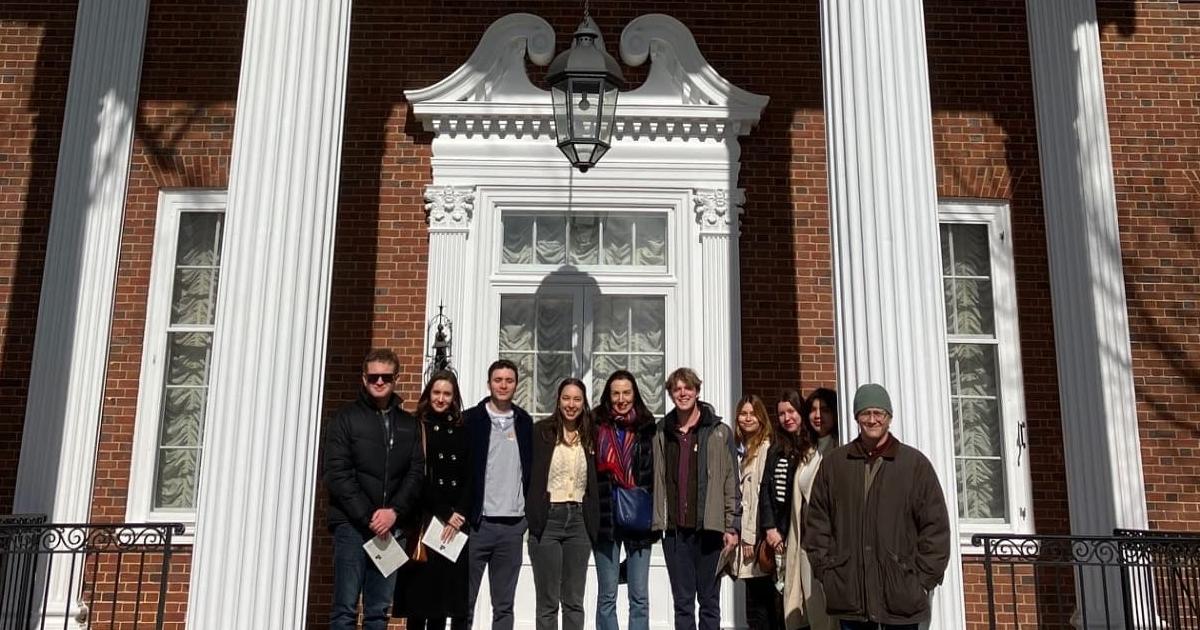
Students see Russian Imperial treasures at the Hillwood Museum
On Saturday, February 10, 2024, the Carmel Institute organized a student trip to the Hillwood Estate, Museum & Gardens. The group explored Marjorie Merriweather Post’s superb collection of Russian imperial porcelain and jewelry, which she acquired while accompanying her third husband Joseph Davies to Moscow between 1937 and 1938 after President Roosevelt asked him to serve as ambassador to the USSR.
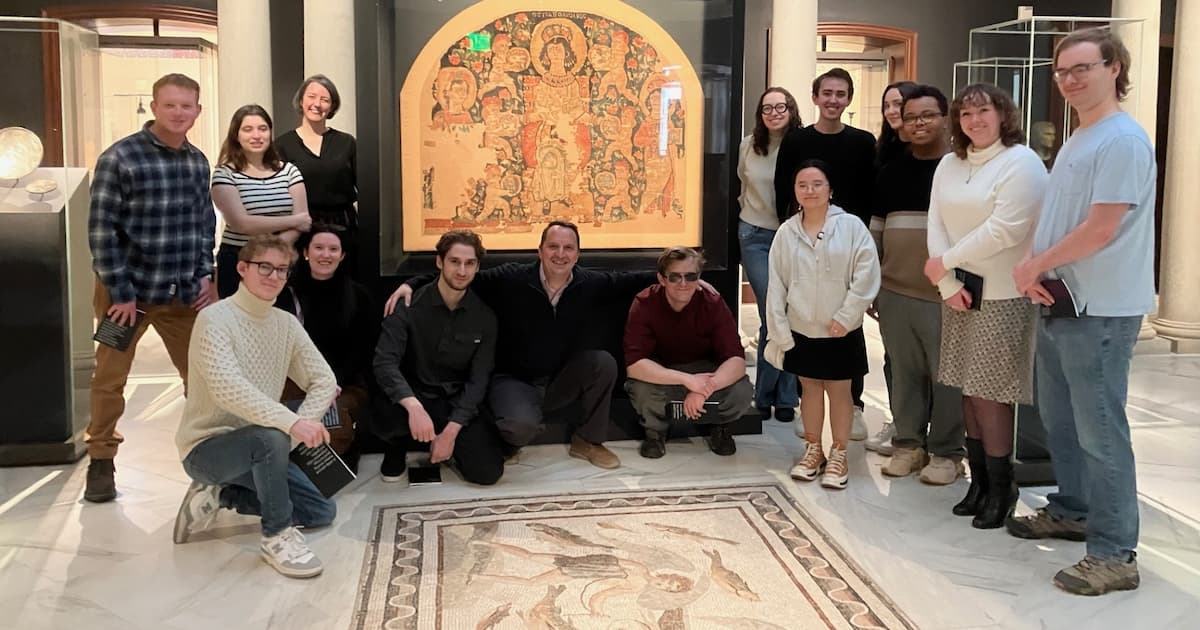
Students see Byzantine artifacts at the Dumbarton Oaks Museum
On Saturday, February 3, 2024, The Carmel Institute organized a trip to one of Washington’s most unique museums, Dumbarton Oaks. Dr. Fedyashin brought students from American and George Washington universities to explore Dumbarton Oaks’ new exhibit called “Rich in Blessings: Women, Wealth, and the Late Antique Household.”
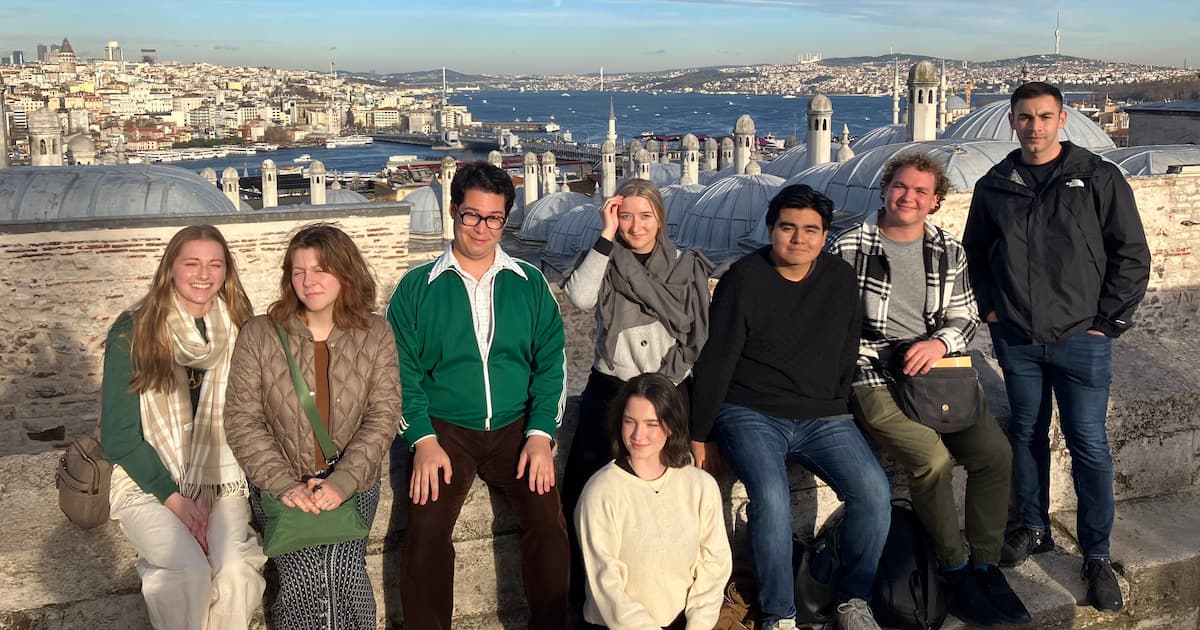
The Culture of Eastern Orthodoxy: Byzantine Influences on Russia and Eurasia over Winter Break 2023
In December of 2023, the Carmel Institute sponsored a class-trip to Istanbul for a group of students from American and George Mason universities. It explored the legacy of Byzantium and Byzantine Orthodoxy in Eurasia.
Before departing the US, the students read Bettany Hughes' Istanbul: A Tale of Three Cities as a general introduction to the history of the Byzantine Empire and Constantinople. Homer’s legendary Iliad was an optional reading. The class combined discussions of the books with visits to churches, museums, mosques, art galleries, and archaeological sites in Istanbul and beyond. In the process, students explored the history of the Byzantine Empire, the evolution of Eastern Orthodoxy, and interconfessional relations throughout medieval and modern history. Dr. Onur İşçi of Kadyr Has University in Istanbul also joined the group on select museum visits, guided some of the tours, participated in discussions, and gladly answered many questions while touring Istanbul.
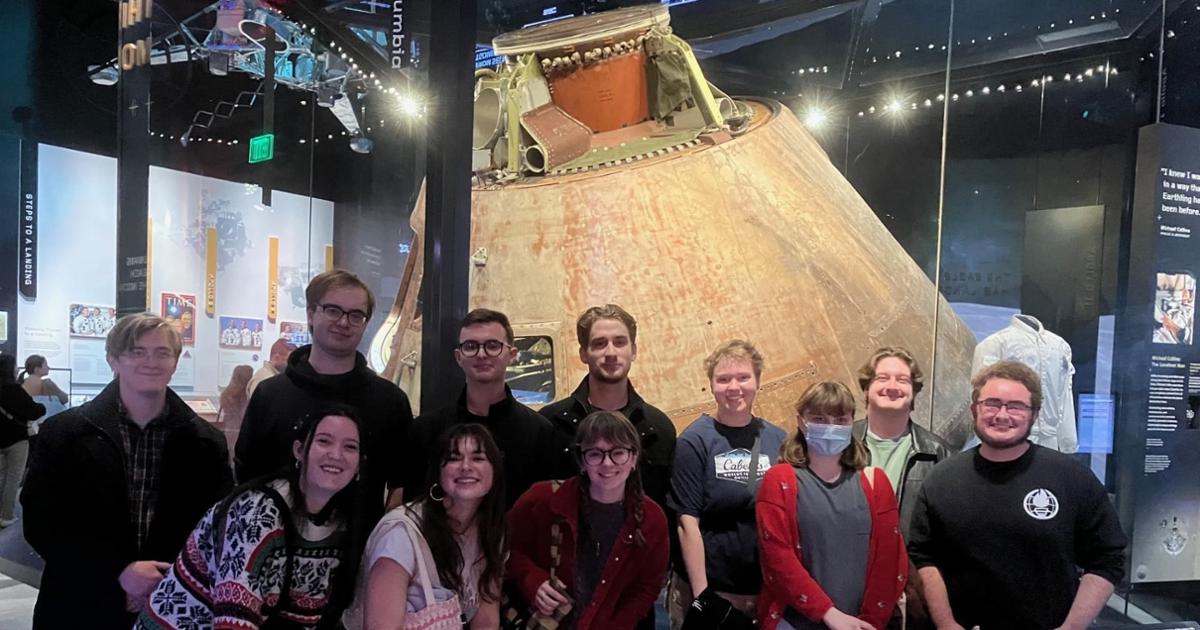
Students witness history through the artifacts of the Cold War's Space Race
Professor Anton Fedyashin walked students through the Space Race stages (Mercury, Gemini, Apollo) as one form of the Cold War conflict that dominated world politics and culture for nearly 50 years. Museums give students a deeper understanding of history through tangible artifacts.
Read more...
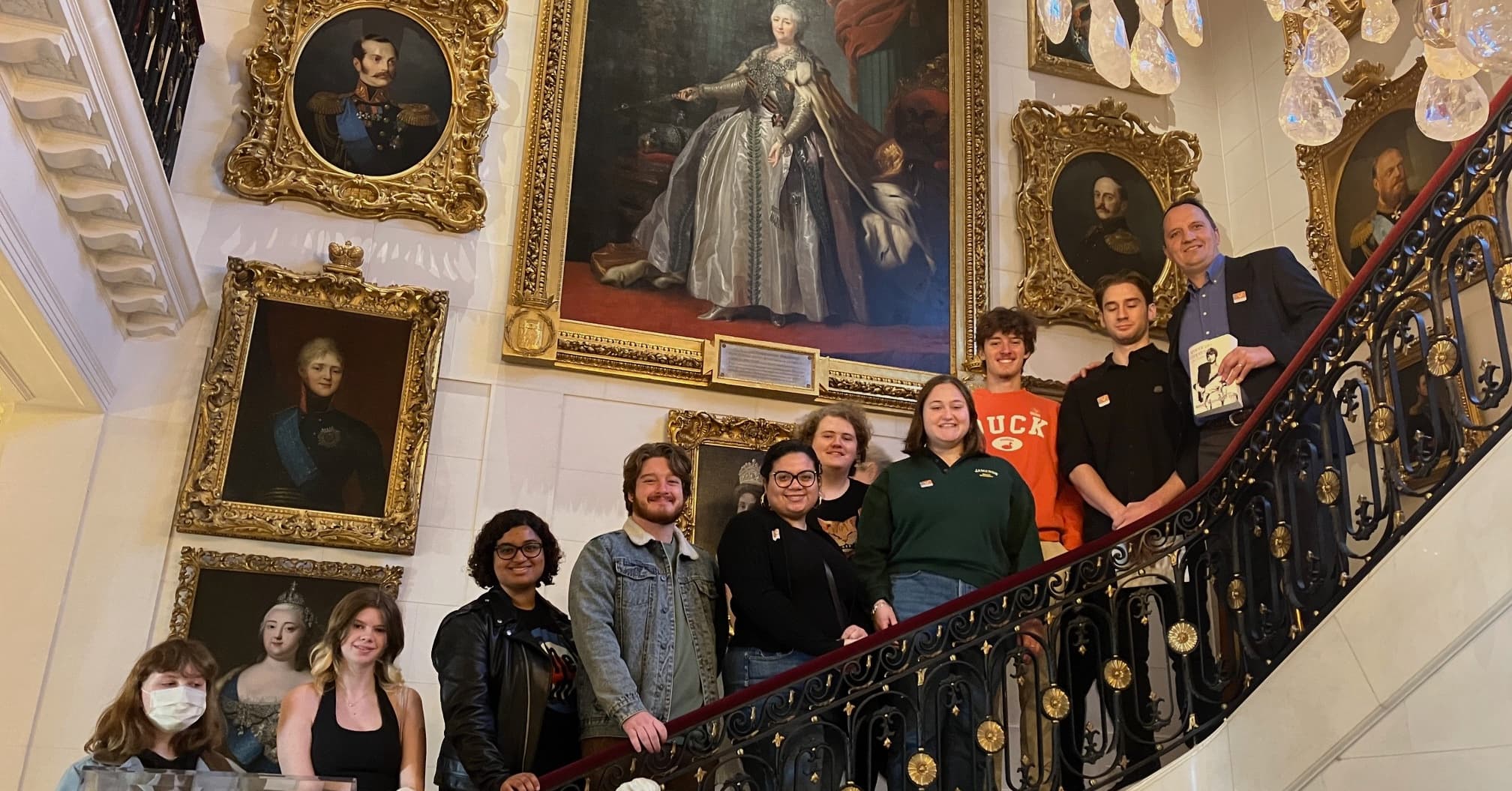
Students See Russian Cultural Objects Firsthand at the Hillwood Museum and Gardens
On Saturday, November 18, 2023, the Carmel Institute organized a student trip to the Hillwood Estate, Museum & Gardens. The group broke up in two to tour the mansion with Hillwood’s excellent docents. They explored Marjorie Merriweather Post’s superb collection of Russian imperial porcelain and jewelry, which she acquired while accompanying her third husband Joseph Davies to Moscow between 1937 and 1938 after President Roosevelt asked him to serve as ambassador to the USSR.
The Hillwood not only boasts two Faberge Eggs, but many other unique creations of Faberge’s workshop. It also has the original nuptial crown of the last Tsarina, Aleksandra. The students heard about Karl Briullov’s Portrait of Countess Julia Samoilova (1834) and Konstantin Makovskii’s A Boyar Wedding Feast (1883). Both originals are part of the museum’s permanent collection. The students then explored the religious art collection and talked about the Romanov dynasty, almost all of whose members are represented in the portraits that greet visitors in the mansion’s grand vestibule.
Museum visits, concert attendance, and class-trips have been part of the Carmel Institute’s programming since its inception. As Professor Fedyashin has always reminded his students, although our knowledge about the past depends primarily on reading, history must also be walked, seen, touched, smelled, and tasted. Before coming to the Hillwood, the group read selections from Joseph Davies’s diplomatic memoir Mission to Moscow (1941) and watched Michael Curtiz’s film Mission to Moscow (1943).
At lunch at the Hillwood café, the students also tried the famous Postum beverage. Ms. Post’s father, Charles William (C. W.) Post invented this drink in the late nineteenth century, and it gave its name to the Postum Company, which he founded in Michigan. Made from roasted wheat-bran and molasses, Postum became the nucleus around which C. W. Post built his business empire, which eventually became General Foods.
The trip was a visual component of a holistic experience that stays with students of history for their entire lives. Engaging with history on the page, on the screen, and in motion helped to open young minds to the importance of cultural diplomacy and the great legacy of American philanthropy.
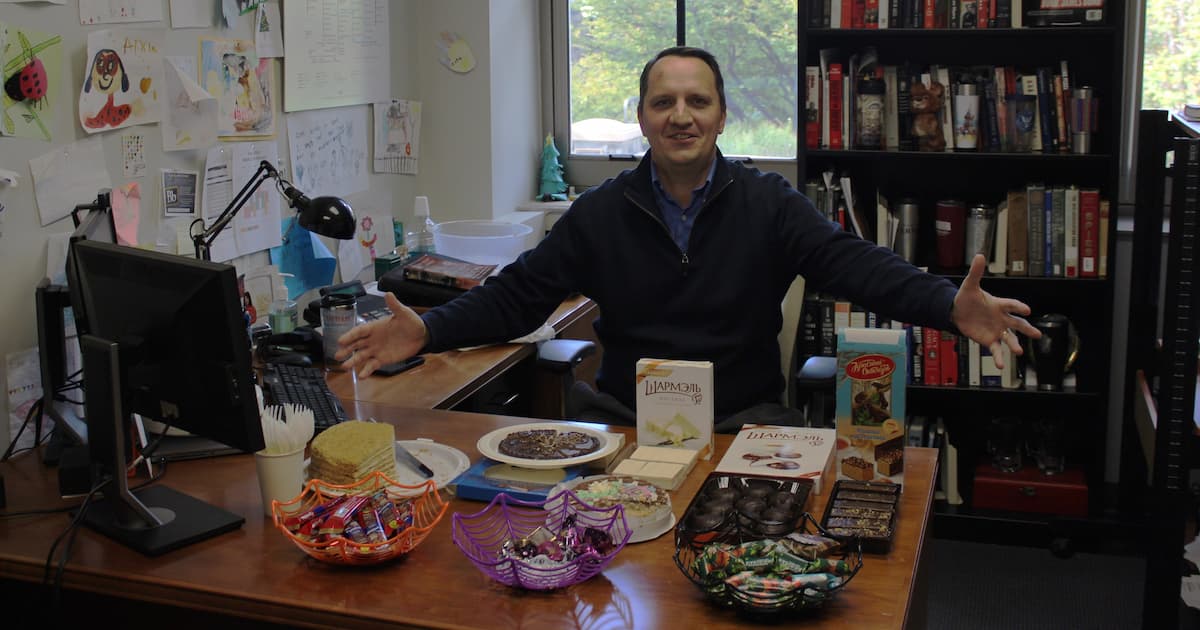
Carmel Institute Director offers Russian candies for the CAS Halloween Trick-or-Treat!
The day after Halloween, AU’s College of Arts and Sciences held the “CAS Trick-or-Treat in Battelle” event. Professors welcoming students to their offices with candy and other treats from the regions of their academic specialization.
Carmel Institute Director Anton Fedyashin treated students to candy and pastries from Russia, Poland, Ukraine, and Moldova. “Mishka kosolapyi,” “Belochka,” and “Ptich’e molko” candy represented Russia, as did the “Medovik,” or Honeycake, torte. Students could also sample a piece of “Kievskii” torte from the Roshen company. For those with a taste for chocolate covered waffle, a slice of the Polish “Torcik Wedlowski” offered a perfect snack. And to round out the region, Moldovan Clepsidra candies offered chocolate-covered praline.
Many students stopped by for a taste of Eastern Europe and a chat about the region’s rich culinary history and the department’s course selection for the spring semester.
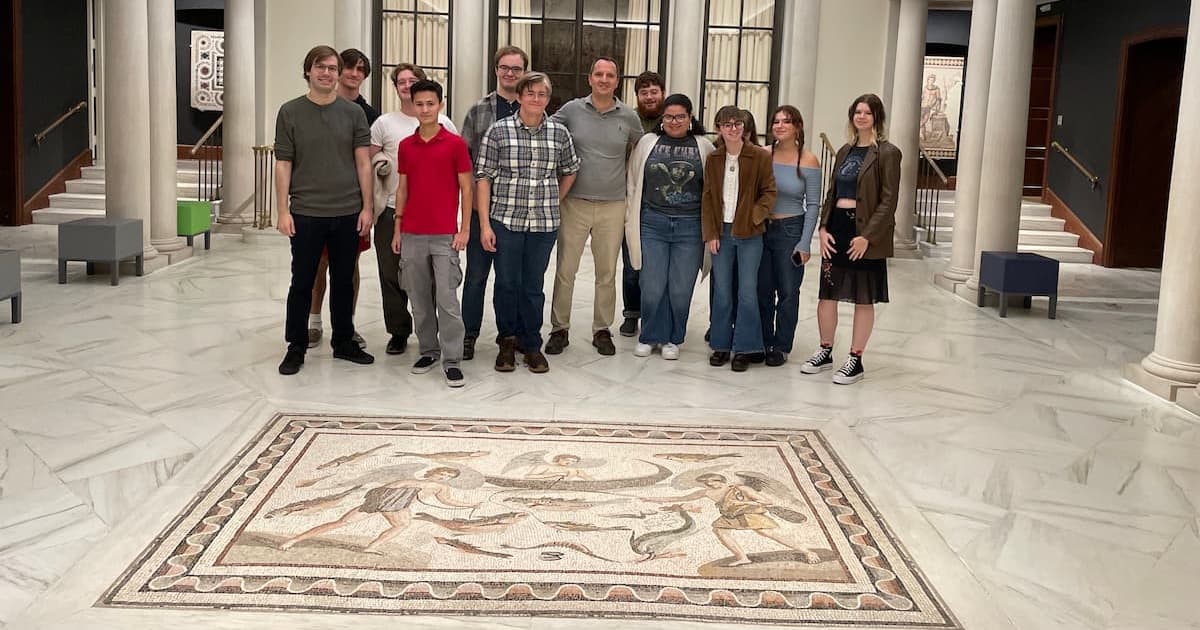
Students Explore a Little-Known Gem: Dumbarton Oaks Museum
On Saturday and Sunday, September 23 and 24, 2023, the Carmel Institute organized two trips to one of Washington’s most unique museums, Dumbarton Oaks. Dr. Fedyashin gave the students a 90-minute tour of Dumbarton Oaks’ magnificent Byzantine collection with a focus on the evolution of the human body as a religious symbol from classical antiquity to Byzantine Christianity. The tour began with the figurine of Hephaistos from the fifth century BCE and culminated with El Greco’s haunting The Visitation (1610-1614). Before visiting Dumbarton Oaks, the students also listened to Igor Stravinsky’s ‘Dumbarton Oaks’ Concerto and discussed the importance of the 1944 Dumbarton Oaks Conference in laying the groundwork for the creation of the United Nations Organization in 1945. The group also toured the Pre-Columbian collection in the stunning gallery designed by renowned American architect Philip Johnson.
Museum visits, concert attendance, and class-trips have been part of the Carmel Institute’s programming since its inception. As Professor Fedyashin has always reminded his students, although our knowledge about the past depends mostly on reading, history must also be walked, seen, touched, smelled, and tasted. Having discussed Emperor Constantine VII's De Administrando Imperio (the Dumbarton Oaks bi-lingual edition from 1967), Dr. Fedyashin’s classes got to experience bit of the world in which this historic document was created. The trip contextualized the first text that described the political structure and trading activities of the Rus states. And this holistic experience of history will stay with them for much longer. Dr. Fedyashin’s classes also read Andrzej Poppe's "The Political Background to the Baptism of Rus',” part of the Dumbarton Oaks Papers (1976) as well as former Dumbarton Oaks director Edward Keenan’s “Muscovite Political Folkways” (1986). Since so many paths lead back to Dumbarton Oaks in Byzantine and Muscovite studies, it is a blessing to have this unique museum so close to AU.
After the tour, the students went to lunch at Divan Café, where they sampled Mediterranean cuisine as they discussed the magnificent collection that Robert and Mildred Bliss bequeathed to Harvard University in 1940 and made available to the public for free. Experiencing the Byzantine past on the page and in the museum helped to open young minds to the wonders of history as well as the great legacy of American philanthropy. American University is grateful to Ms. Susan Carmel for creating the Carmel Institute, which affords students such remarkable opportunities to learn about humanity’s shared artistic and spiritual past.
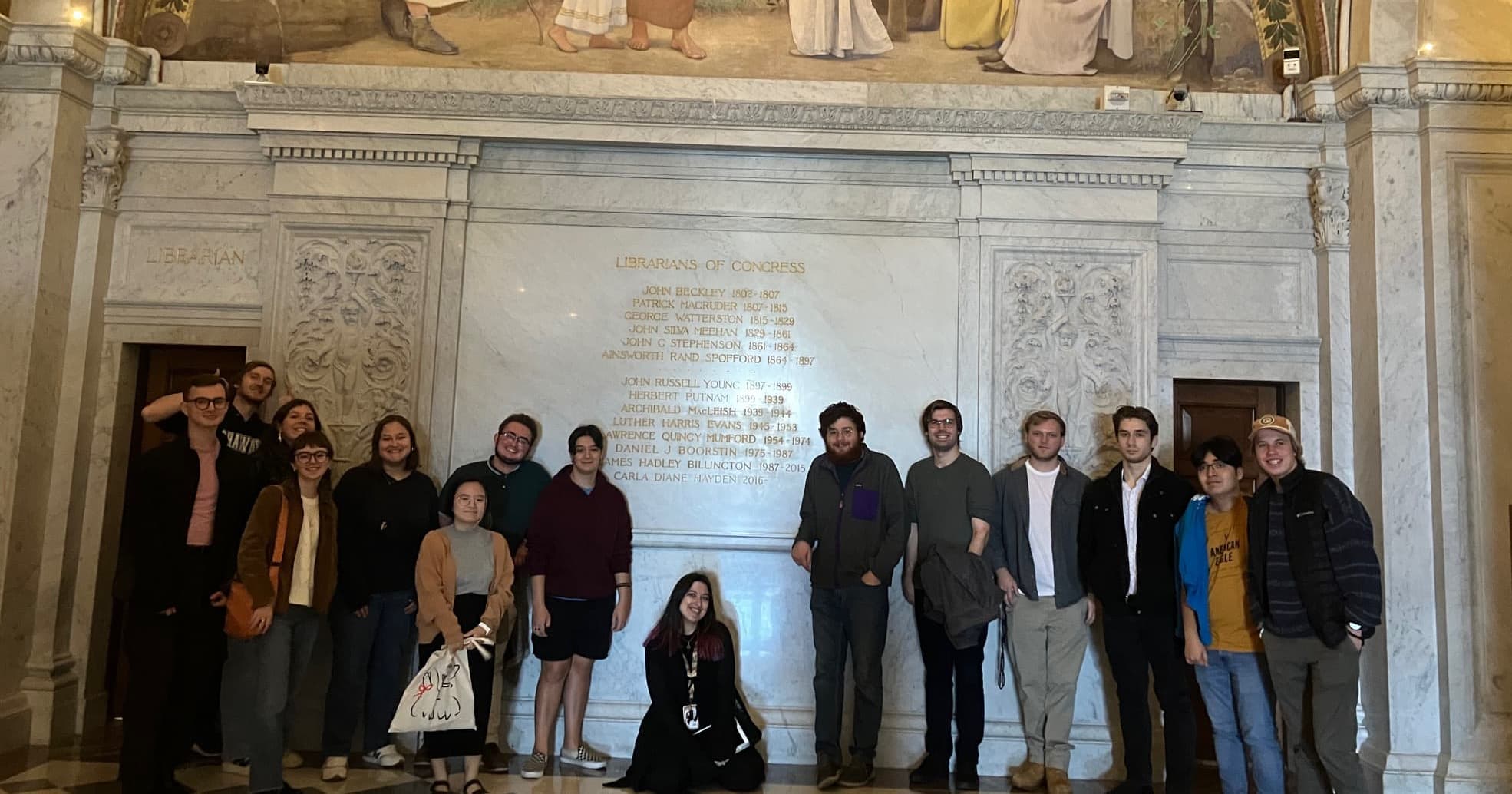
Exploring the Library of Congress: A Journey through James H. Billington’s Legacy
In fall 2023, students with a passion for history explored the Library of Congress with AU alumna Gabriella Folsom. Based in the nation's capital, history majors have the privilege of delving into history in a way that goes beyond the typical tourist experience. The Carmel Institute of Russian Culture and History supported a special academic trip that honored the legacy of one of its greatest supporters, former Librarian of Congress, Dr. James Hadley Billington, author of The Icon and the Axe, among many other books and articles about Russia.
Instead of the standard public tour, students registered as researchers and got their reader cards, granting them access to the Library's extensive collections and making them part of a rich intellectual tradition. Students explored the three iconic buildings—Jefferson, Adams, and Madison—connected by a web of tunnels, as well as highlights, such as the Office of the Librarian, the Mary Pickford Theater, the Great Hall, and the Gutenberg Bible. This hands-on approach not only provided a rare glimpse into the Library's vast collections but also set the stage for our students to utilize these invaluable resources in their future research.
The Library of Congress holds the distinction of being the largest in the world, boasting over 200 million items in its collections. It serves as a living testament to the significance of preservation and access. Established in 1800, the Library continuously safeguards collections that span centuries, setting the global benchmark for library collection management, digitization, and preservation. During the tour, Gabriella enlightened our students about the Library's mission, its role as Congress's library, and its de facto status as the national library.
One of the distinctive features of the Library of Congress is its international and universal collections. Approximately half of the Library’s collections are in languages other than English, and it proudly houses the largest Russian-language collection outside of Russia. Our students had the opportunity to explore James Billington's profound legacy during the tour. Billington, who served as the Librarian of Congress from 1987 to 2015, was a transformative figure, expanding the Library's reach to the public and ushering it into the modern age. Under his leadership, the Library's collections almost doubled from 85.5 million items in 1987 to more than 160 million items. He also pioneered digital initiatives, including the National Digital Library and a vibrant social media presence. Billington also championed numerous iconic Library programs, such as the National Book Festival, Junior Fellows program, and the Kluge Center, leaving an indelible mark on the institution's history.
Students were able to experience Billington’s legacy firsthand, from his construction of the underground connection between the Library and the U.S. Capitol, to his pioneering work in making the Library of Congress a hub of knowledge accessible to all. They also saw some of his most notable acquisitions and exhibitions—the 1507 Waldseemüller world map, sometimes referred to as “America’s birth certificate,” and the permanent exhibit of Thomas Jefferson’s library. Through their immersion in the Library's history, students discovered that this institution is more than just a repository of books; it serves as a vital intersection of history, accessibility, and the pursuit of knowledge.
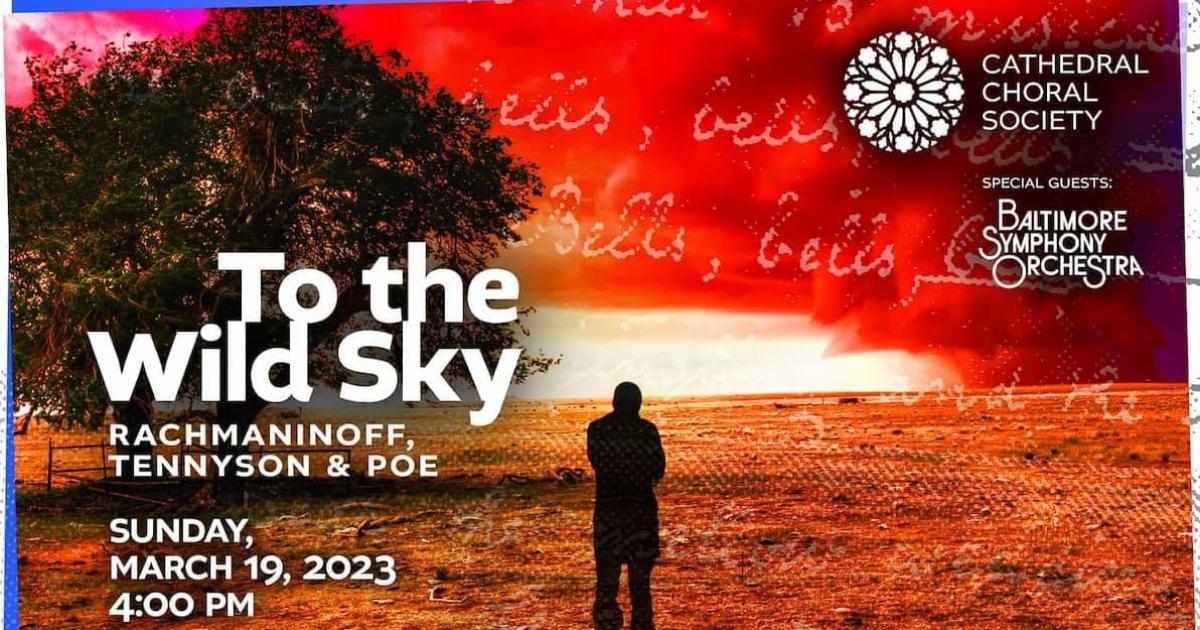
Carmel Institute Sends Students “To the Wild Sky: Rachmaninov, Tennyson, & Poe” at the National Cathedral
Cathedral Choral Society and the Baltimore Symphony Orchestra presented an innovated program that links the visual medium of painting, music, and poetry set to musis, demonstrating the deep interconnectedness not only of different art forms, but the human need for art and artistic expression.
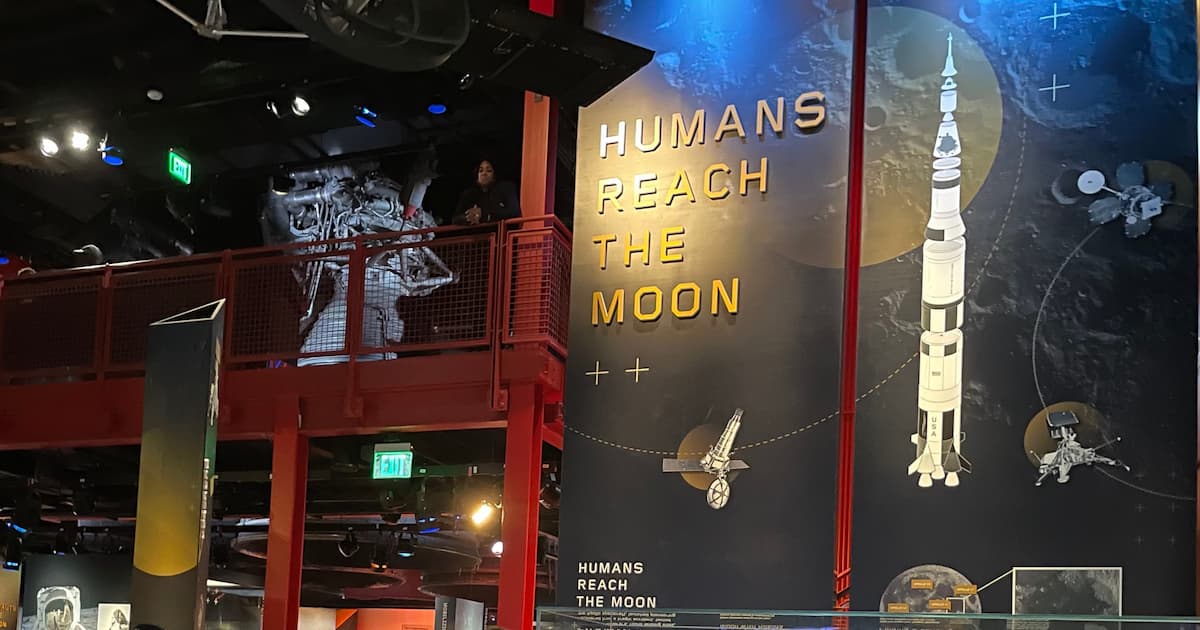
Students Explore "Destination Moon" at the National Air & Space Museum to Better Understand the Cold War Space Race
On Saturday, March 4, 2023, the Carmel Institute organized a trip to the National Air & Space Museum, which reopened half of its building on the National Mall in November of 2022 after a long reconstruction process. Dr. Fedyashin gave the group an hour-long in-depth tour of the “Destination Moon” hall and exhibit.
The new exhibit offers a unique insight into how the space race between the superpowers manifested itself through the competition to land the first human onto Earth’s only satellite. Visitors can explore the story of the first animals sent into space—dogs by the Soviets and chimps by the US. The original capsule in which Ham the chimp went up is on display. Dr. Fedyashin ushered the students through the overlapping stages of the US space program: Mercury, Gemini, and Apollo. At each stage, Soviet successes in space—the launch of Sputnik, Gagarin’s and Tereshkova’s breakthroughs, Leonov first spacewalk—impelled NASA to become more creative.
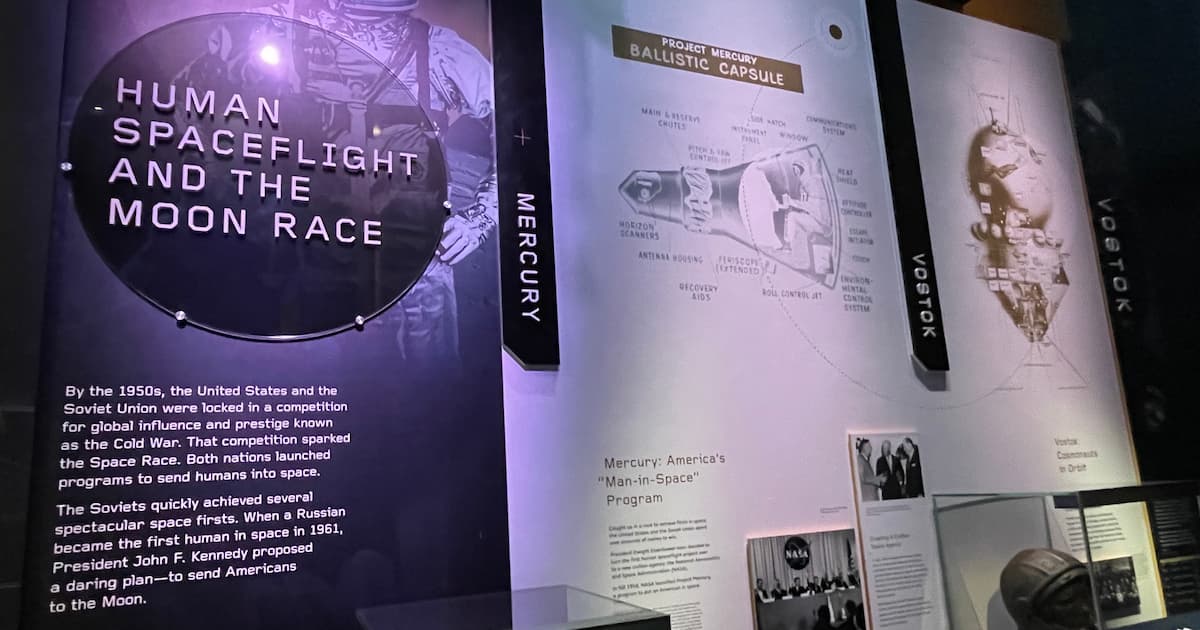
The museum contains Alan Shepard’s original Freedom 7 capsule and space suit. The original Gemini VII vehicle shows just how cramped the early ships were, although Frank Borman and Jim Lovell spent 14 days in it. Dr. Fedyashin then led the group through the Apollo missions, which culminated with the Apollo 11 landing on the Moon in July of 1969. The original Columbia reentry vehicle is on display and so is the original space suit in which Neil Armstrong first set foot onto the Moon. The space race was one of the rare examples of mutually enriching superpower competition—one where intellectual and technological prowess ended up benefitting all of mankind. The students then watched the half-hour long documentary “Dark Matter” in the newly renovated Planetarium.
Museum visits, concert attendance, and class-trips have been part of the Carmel Institute’s programming since its inception. As Professor Fedyashin has always reminded his students, although our knowledge about the past depends primarily on reading, history must also be walked, seen, touched, smelled, and tasted. Before coming to Air & Space, the group read selections from a unique space race double-memoir by American astronaut David Scott and Soviet cosmonaut Alexei Leonov called Two Sides of the Moon (2004).
After the museum, the students went to Carmine’s Restaurant for lunch. The restaurant’s home-style menu emphasized one of the many commonalities between astronauts and cosmonauts—their desire to return home after exhilarating but dangerous missions.
The trip was a visual component of a holistic experience that stays with students of history for much longer than classroom engagement alone. Exploring history on the page, on the screen, and through original objects helped to open young minds to the importance of international scientific cooperation.
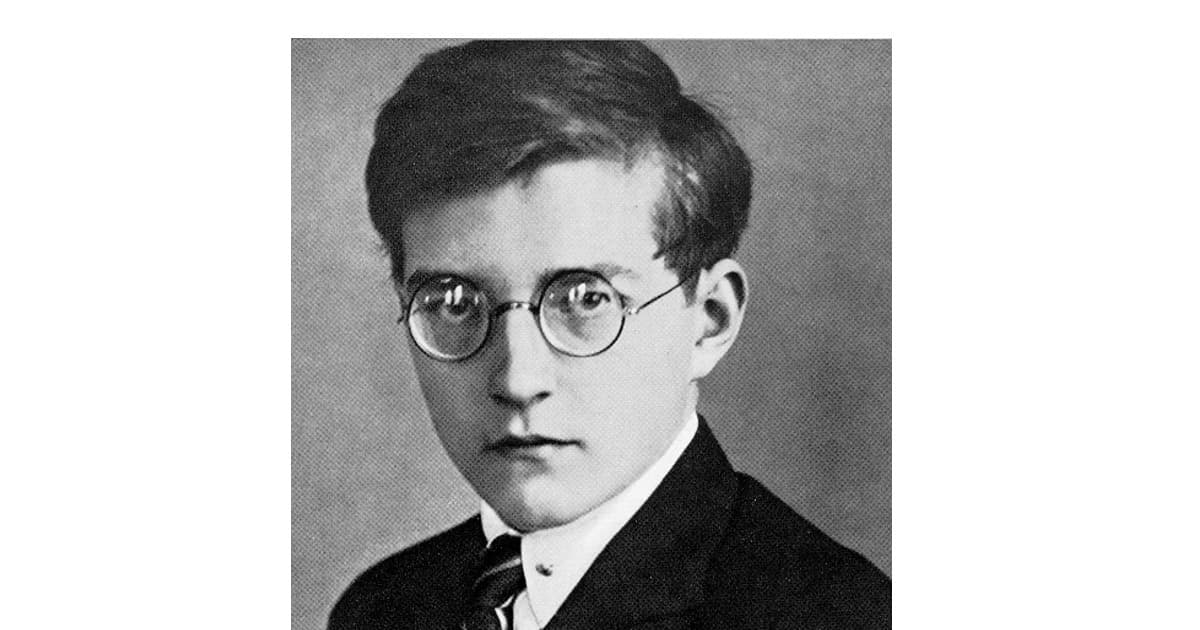
American University Students Experience Shostakovich’s Innovative Concerto for Piano, Trumpet, and Strings & Sibelius’ Symphony No. 2
The Carmel Institute provided AU students with tickets to the National Symphony Orchestra performing Shostakovich’s Concerto for Piano, Trumpet, and Strings as well as Sibelius’ Symphony No. 2, along with an NSO commission from Jessie Montgomery, led by guest conductor Dalia Stasevska in her NSO debut.
Shostakovich’s concerto is a playful romp that sampled from Beethoven, Haydn, Mahler, and even Shostakovich’s earlier works. This 1933 work was Shostakovich at his most innovative, when he was wildly popular and before Stalin’s government censured him for the first time. The composition had started out as a trumpet concerto. But then Shostakovich added the piano as an equal partner and played the instrument himself at the work’s premiere to rave reviews. The concerto plays with mood and time signatures throughout, at times sarcastic, witty, and playful, and at others passionately melodic, before rising to a crescendo with the piano, trumpet, and strings converging to give the audience a joyful C major finale.
Sibelius was born in 1865 in the Grand Duchy of Finland in the Romanov Empire. He composed his Second Symphony in Italy and Helsinki between 1899 and 1902. The symphony’s Finnish audience quickly embraced it as a patriotic statement on independence from Russia, many even calling it the “Symphony of Independence,” but there is no direct evidence that the composer intended that interpretation. The work evokes thoughts of Beethoven and Tchaikovsky, but still follows the pioneering trends of the time, breaking with the classical model for thematic development in favor of complex orchestrations that create extreme shifts in tone between movements. At the same time, the work’s famous three note motif weaves throughout so cleverly that the connections between movements are not always obvious, except in hindsight.
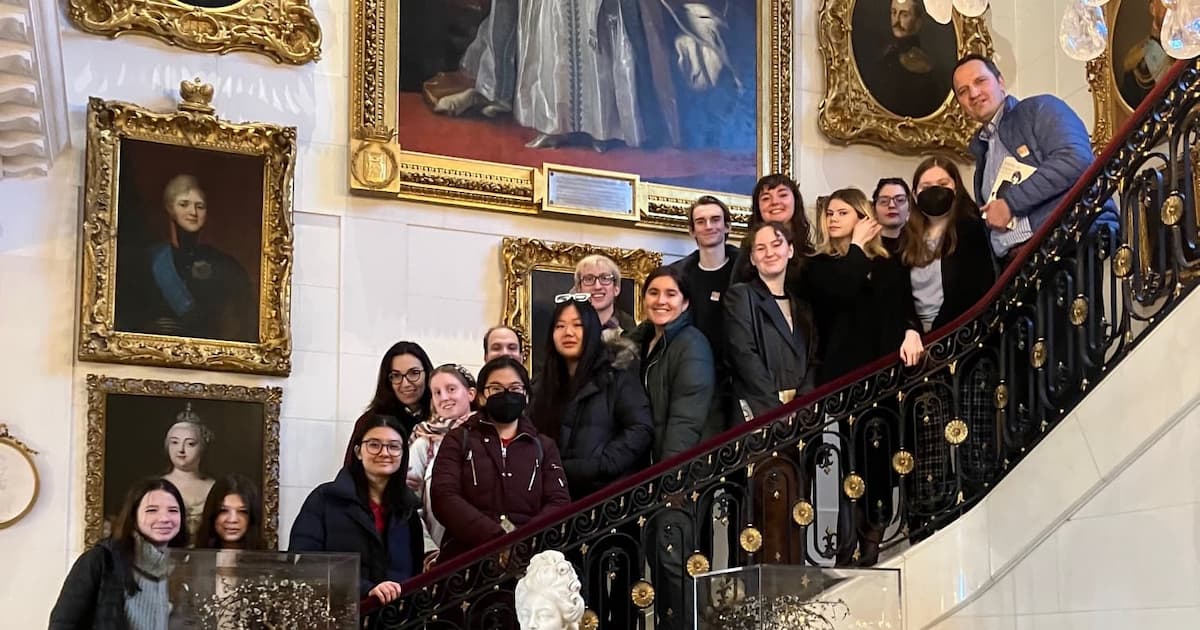
Students Experience Russian Culture at the Hillwood Museum and Gardens
On Saturday, February 18, 2023, the Carmel Institute organized a student trip to the Hillwood Estate, Museum & Gardens. The group broke up in two to tour the mansion with the Hillwood’s excellent docents. They explored Marjorie Merriweather Post’s superb collection of Russian imperial porcelain and jewelry, which she acquired while accompanying her third husband Joseph Davies to Moscow between 1937 and 1938 after President Roosevelt asked him to serve as ambassador to the USSR.
The Hillwood not only boasts one of the famous Faberge Eggs, but many other unique creations of Faberge’s workshop. The students heard about Karl Briullov’s Portrait of Countess Julia Samoilova (1834) and Konstantin Makovskii’s A Boyar Wedding Feast (1883). Both originals are part of the museum’s permanent collection. The students then explored the religious art collection and talked about the Romanov dynasty, almost all of whose members are represented in the portraits that greet visitors in the mansion’s grand vestibule.
Museum visits, concert attendance, and class-trips have been part of the Carmel Institute’s programming since its inception. As Professor Fedyashin has always reminded his students, although our knowledge about the past depends primarily on reading, history must also be walked, seen, touched, smelled, and tasted. Before coming to the Hillwood, the group read selections from Joseph Davies’s diplomatic memoir Mission to Moscow (1941) and watched Michael Curtiz’s film based on it, also titled Mission to Moscow (1943).
At lunch at the Hillwood café, the students also tried the famous Postum beverage. Ms. Post’s father, Charles William (C. W.) Post invented this drink in the late nineteenth century and it gave its name to the Postum Company, which he founded in Michigan. Made from roasted wheat-bran and molasses, Postum became the nucleas around which C. W. Post build his business empire, which eventually became General Foods.
The trip was a visual component of a holistic experience that stays with students of history for much longer. Engaging with history on the page, on the screen, and in motion helped to open young minds to the importance of cultural diplomacy and the great legacy of American philanthropy.
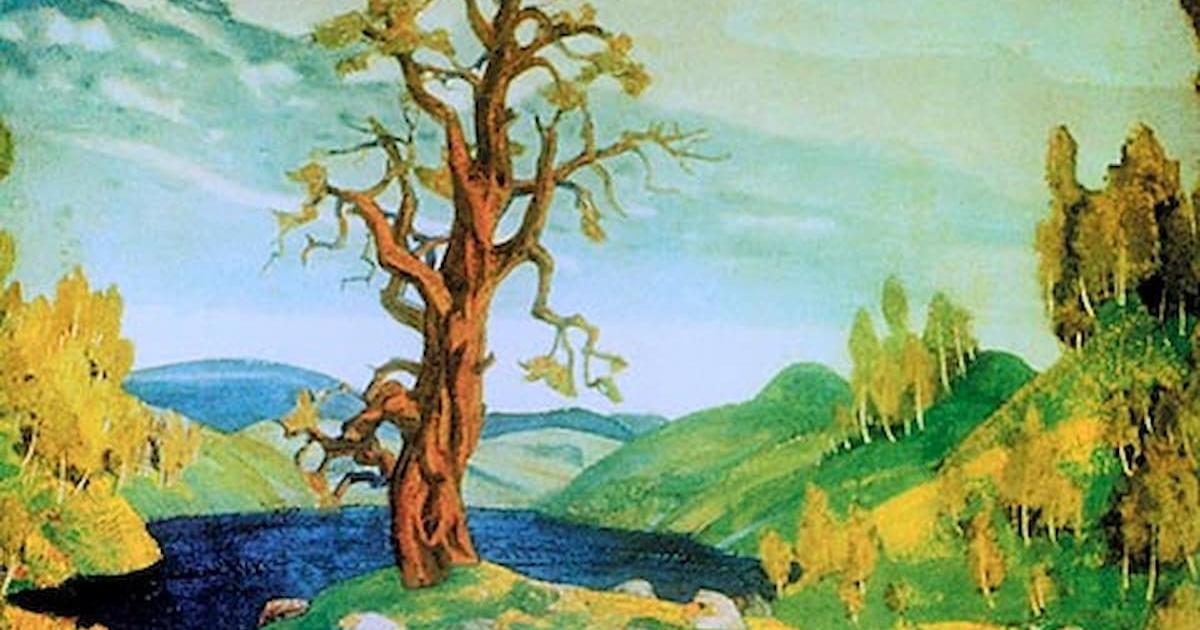
Stravinsky’s “Rite of Spring” Thrills Audiences at the Kennedy Center
The Carmel Institute provided tickets for American University students to hear Prokofiev’s Violin Concerto, No. 2 with violin soloist Francesca Dego and Stravinsky’s “Rite of Spring” with the National Symphony Orchestra performing under guest conductor Krzysztof Urbański.
The evening began with Wojciech Kilar’s Krzesany, written in 1974, which takes the audience on a journey from light melodies, to foreboding themes, to dreamlike flutterings before concluding with almost chaotic crescendo. The orchestra then smoothly moved into Prokofiev’s Violin Concerto No. 2 in G minor, with an utterly brilliant and commanding performance from Francesca Dago on violin. Dago’s instrument and the orchestra had a lyrical conversation based on a traditional Russian folk melody, evoking feelings of traveling the Russian countryside.
Stravinsky’s “Rite of Spring” was the glittering gem of the evening. Stravinsky based the work on music from traditional Russian folk tales and village celebrations of spring and planting season near his family home. He combined instruments in innovative ways and pushed the instruments to their limits in terms of range and technique. This work was part of a new era for Russian arts when it premiered in 1913 in Serge Diaghilev’s famous Ballets Russes company at the new Théàtre des Champs Élysées in Paris.
Stravinsky’s pagan-sounding music and the choreography of famous dancer Vaslav Nijinsky caused such an uproar from the Parisian audience that Nijinsky had to stand on a chair and shout out the count for the dancers because they couldn’t hear the orchestra. The raw vitality and unpredictability of the work is still exhilarating for audiences today and gives us a rare glimpse into traditional Russian folk culture.
Urbański led the orchestra in an almost playful manner so that the performance felt much like a dance among the different sections of the orchestra and the conductor. The audience rose to their feet and cheered through the bows from the guest conductor, with renewed volume for each section of the orchestra as Urbański directed each to rise in acknowledgement of their accomplishments. All in all, it was a cool February evening with music to help us all look forward to the warmth of approaching Spring.
PBS’ “Keeping Score,” a series from Michael Tilson Thomas and the San Francisco Symphony, has an article with more details on the history and context of Stravinsky’s “Rite of Spring.”
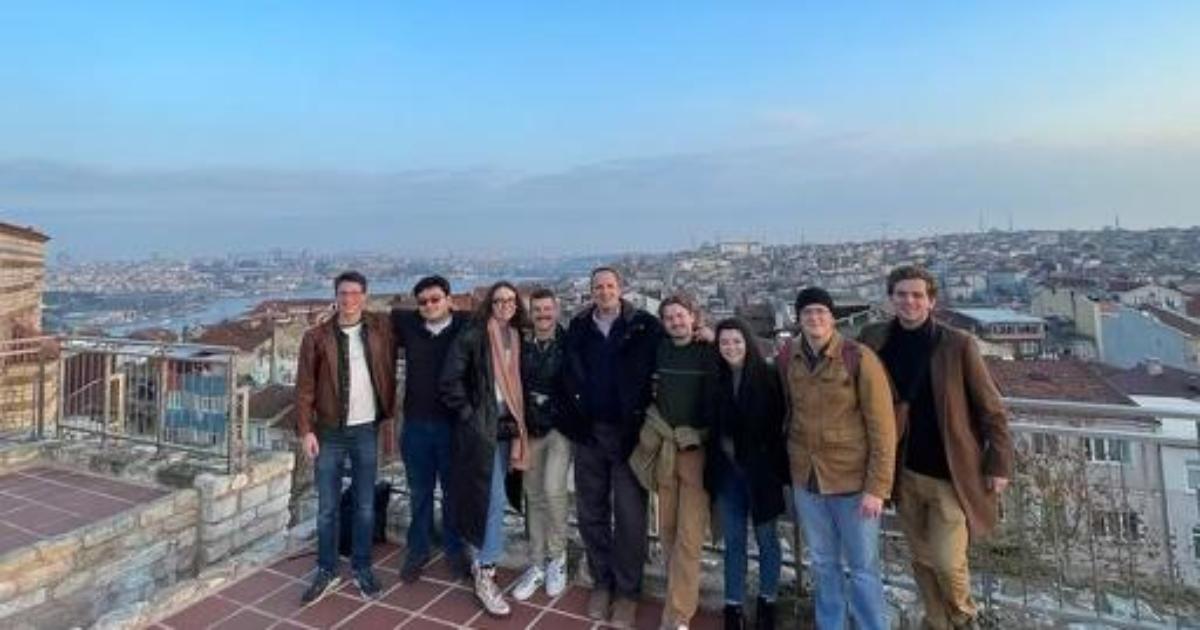
The Carmel Institute takes DC students to Istanbul to discover the Culture of Eastern Orthodoxy: Byzantine Influences on Russia and Eurasia
During AU's Winter Break, the Carmel Institute hosts a group of students from American, Georgetown, and George Washington Universities to Istanbul to see the legacy of Byzantium and Byzantine Orthodoxy on Russia and Eurasia first hand. The trip included readings on the region's history and tours of Byzantine art and architectural treasures.
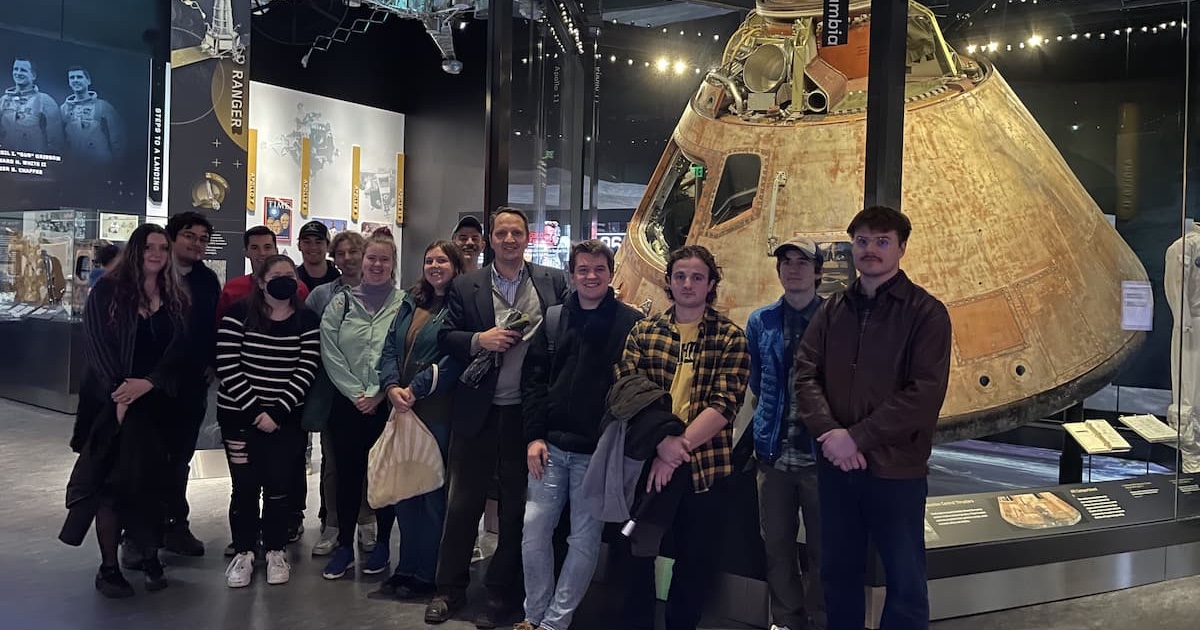
Students Tour the Newly-Reopened Air and Space Museum
On Saturday, December 3, 2022, the Carmel Institute organized a trip to the National Air & Space Museum, which just reopened half of its building on the National Mall after a long reconstruction process. Dr. Fedyashin gave the group an hour-long in-depth tour of the “Destination Moon” exhibit hall, using the exhibits to illustrate and expand upon what students had learned from reading Two Sides of the Moon by astronaut Dave Scott and cosmonaut Alexei Leonov. The students then enjoyed a family-style lunch at Carmine's. See more...
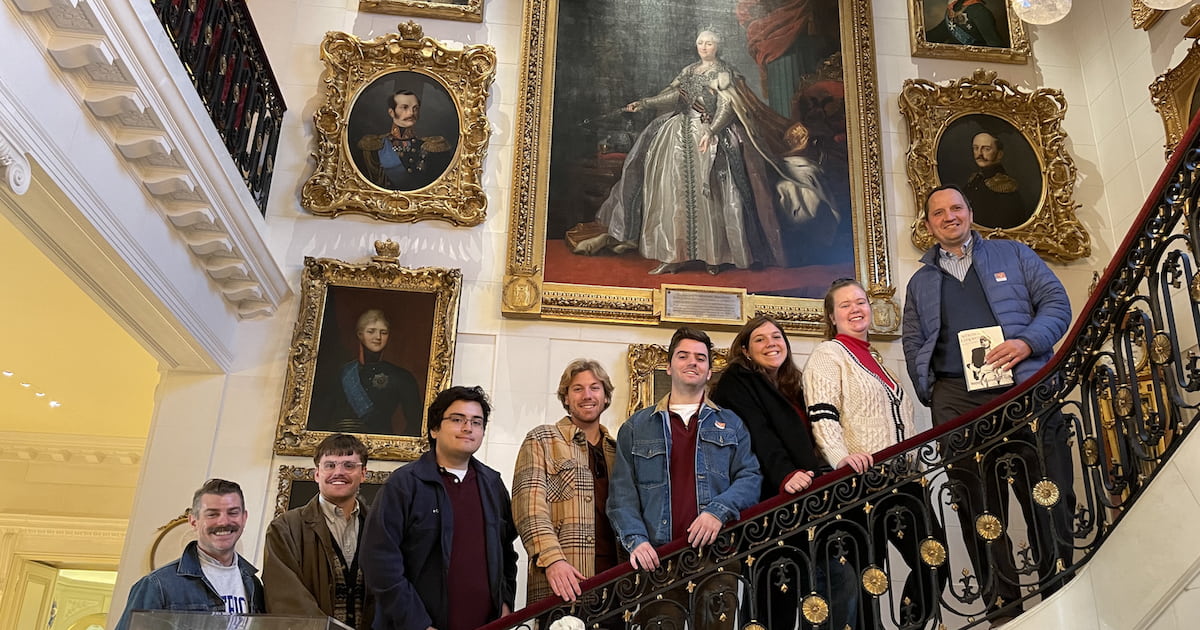
Students Experience Cultural Diplomacy at the Hillwood Museum and Gardens November 19, 2022
On Saturday, November 19, 2022, the Carmel Institute organized a trip to the Hillwood Estate, Museum & Gardens. The students broke up into two groups to tour the mansion with the Hillwood’s excellent docents. They explored Marjorie Merriweather Post’s superb collection of Russian imperial porcelain and jewelry, which Ms. Post acquired while she accompanied her husband Joseph Davies to Moscow between 1937 and 1939 after President Roosevelt asked him to serve as ambassador to the USSR.
The Hillwood not only boasts one of the famous Faberge Eggs, but many other unique creations of Faberge’s workshop. The students heard about the creation of Karl Briullov’s Portrait of Countess Julia Samoilova (1834) and Konstantin Makovskii’s A Boyar Wedding Feast (1883). Both originals are part of the museum’s permanent collection. The students then explored the religious art collection and talked about the Romanov dynasty, almost all of whose members are represented in the portraits that greet visitors in the mansion’s grand vestibule.
Museum visits, concert attendance, and class-trips have been part of the Carmel Institute’s programming since its inception. As Professor Fedyashin has always reminded his students, although our knowledge about the past depends primarily on reading, history must also be walked, seen, touched, smelled, and tasted. Before coming to the Hillwood, the group read selections from Joseph Davies’s diplomatic memoir Mission to Moscow (1941) and watched Michael Curtiz’s film based on it, also titled Mission to Moscow (1943).
After having lunch at the Hillwood café, the students then broke up into two groups again for docent-led tours of the famous Hillwood gardens, which are works of art all on their own.
The trip was a visual component in a holistic experience that stays with students of history for much longer. Engaging with history on the page, on the screen, and in motion helped to open young minds to the importance of cultural diplomacy and the great legacy of American philanthropy.
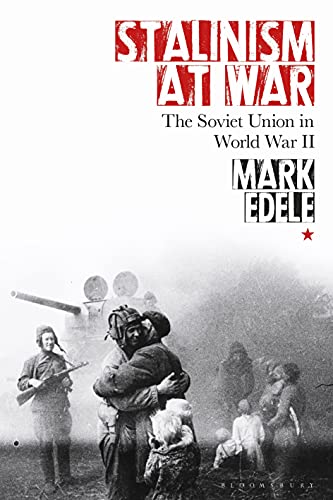
Mark Edele, Stalinism at War:
The Soviet Union in World War II Book Talk, November 18, 2022
The Carmel Institute, in cooperation with Georgetown's Russian History Seminar Series, invited Mark Edele to talk about his 2021 book Stalinism at War: The Soviet Union in World War II on November 18, 2022. Professor Edele is the inaugural Hansen Professor in History and serves as Deputy Dean in the Faculty of Arts at the University of Melbourne, Australia. In this work, he takes a fresh look at the Soviet Union's experience in World War II, widening his examination to both the European and Asian aspects of the conflict.
Read more about the book and Dr. Edele's impressive body of work here.
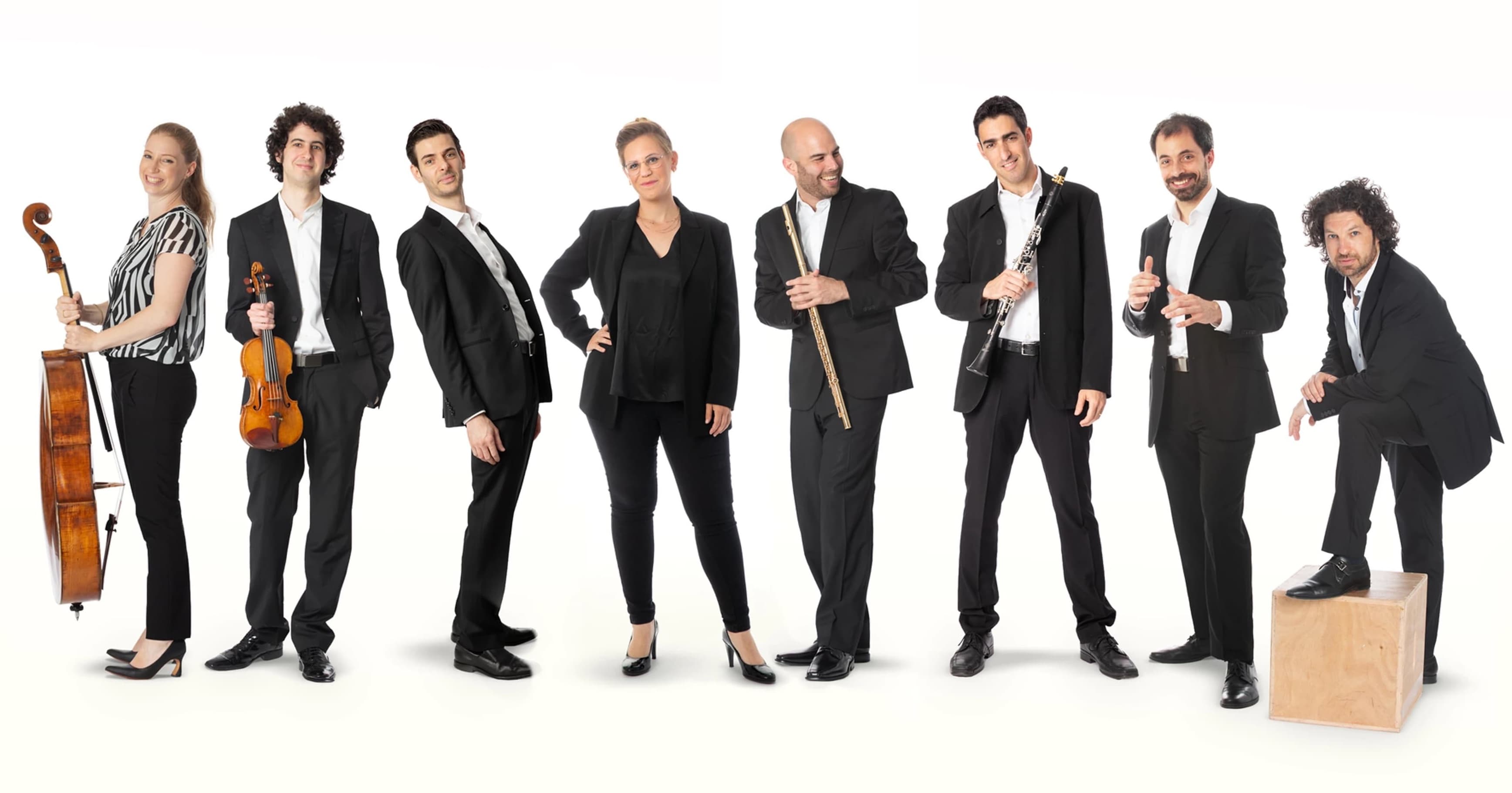
Israeli Chamber Project Explores
Early 20th-Century Musical ShiftsNovember 6, 2022
The Carmel Institute gave 23 tickets to AU students to hear the Israeli Chamber Project in the beautiful Terrace Theater on the upper floor of the Kennedy Center. The ICP aims to bring together unique ensembles of Israeli musicians to play and offer educational outreach programs to the public. This concert focused on the early 20th-century musical shift away from Romanticism into the experimental avant-garde music of Stravinsky and Schoenburg. This shift became the inspiration for the artists whom the Carmel Institute explored in detail in our 2017 symposium, The Russian Experiment with the PostClassical Ensemble and renowned pianist Vladimir Feltsman.
The concert celebrated the death anniversaries of two greats: Saint-Saëns (100th) and Stravinsky (50th), demonstrating the innovation of Stravinsky’s post-war L’Histoire du soldat (The Soldier’s Tale, 1918) in direct contrast to Sains-Saëns’ Romantic-era Fantasy for Harp and Violin, Op. 124, from 1907. The ensemble emphasized the difference in their careful selection of excerpts from Stravinsky’s libretto based on the Russian folk tale The Runaway Soldier and the Devil. A universal story of a man who makes a deal with the devil for riches, the composition is often performed with a conductor due to its many time signature changes, but the performers showed their talent and sophistication in playing the complex composition without one, opting to use nonverbal communication and body cues instead.
The ensemble’s choices walked the audience through the shift from Romanticism to the more atonal and unpredictable avant-garde music of the early 20th century in reaction to the impacts of the Industrial Revolution and increasingly mechanized Western world. The program first took the audience from Saint-Saëns to Stravinsky and Ravel contrasted Schoenburg’s controversial atonality with its unexpected chord changes and resolutions. The group gave the audience grace at the end, returning to Ravel’s Le Tombeau de Couperin, which he dedicated to friends who died in the Great War. Despite its aim to memorialize the dead, the work is more reflective and hopeful than sad, which lifted the audience's spirits at the end of the concert. Ravel himself supposedly responded to criticism that his work was not somber enough with: “The dead are sad enough in their eternal silence.”
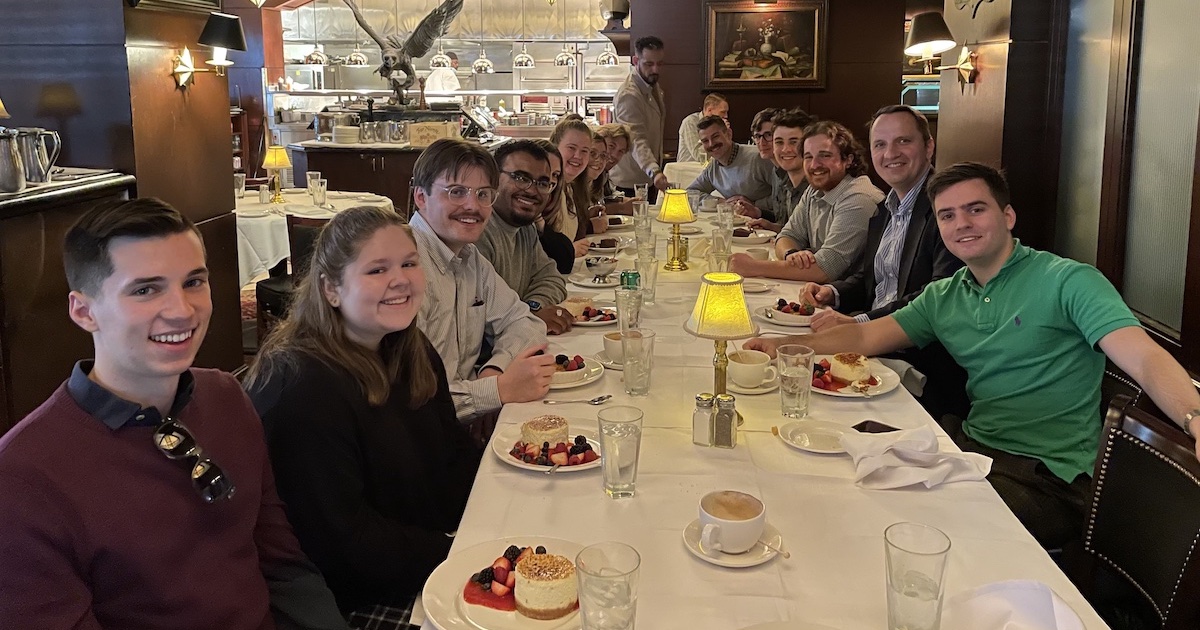
Carmel Institute Takes Students to the National Gallery of Art
On Saturday, October 29, 2022, The Carmel Institute organized a trip to the National Gallery of Art. Professor Fedyashin gave the students a 60-minute tour of the paintings acquired by Andrew Mellon from the Hermitage Museum in 1930-31. The class examined six that are currently on display: Jan van Eyck’s The Annunciation (c. 1434/1436), Sandro Botticelli’s The Adoration of the Magi (c. 1478/1482), Raphael’s Alba Madonna (c. 1510), Titian’s Venus with a Mirror (c. 1555), Paolo Veronese’s The Finding of Moses (c. 1570/1575), and Jean Siméon Chardin’s The House of Cards (c. 1737). Professor Fedyashin helped the students see how Renaissance art changed as the period progressed, reflecting the historical changes that drove the new European worldview and humanism's growing influence.
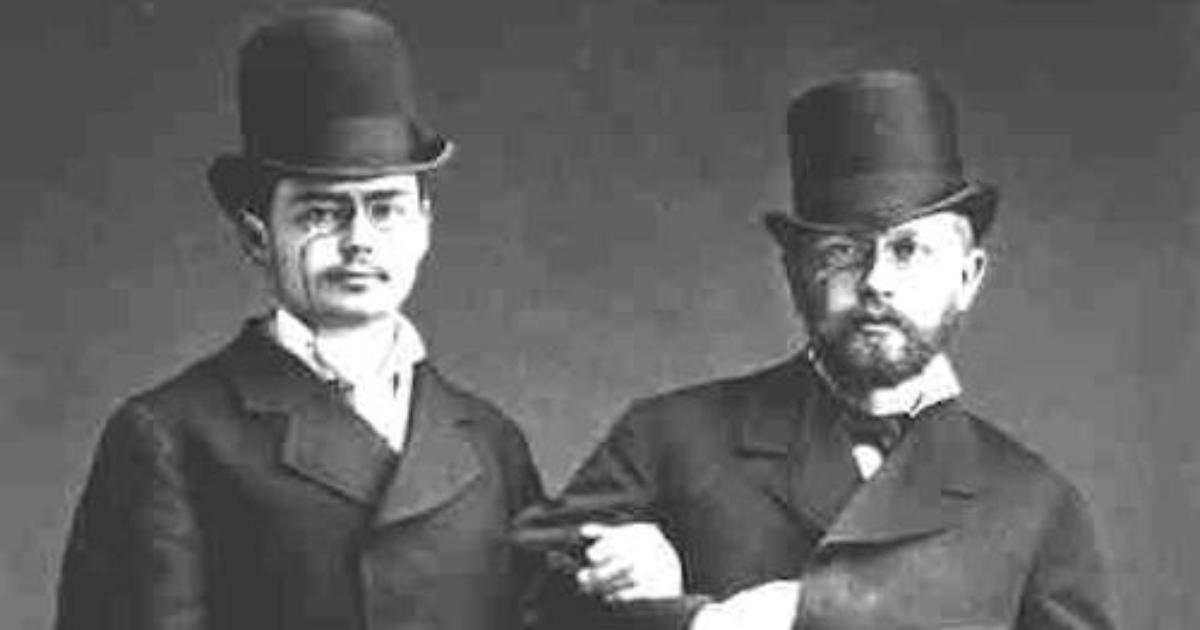
Carmel Institute Provides Tickets to Tchaikovsky's Violin Concerto & Other Works at the Kennedy Center
The Carmel Institute purchased tickets for 45 AU community members to hear Tchaikovsky's Violin Concerto in D Major, featuring world-class violinist and conductor Julian Rachlin, and other works at the Kennedy Center on Friday, October 28, at 8 pm.
The evening began with Italian Ottorino Respighi’s short but lively Burlesca, then Rachlin began his outstanding solo in Pyotr Ilyich Tchaikovsky’s Concerto in D Major, Op. 35. Over the next 34 minutes, Rachlin and the National Symphony Orchestra conversed back and forth in music. The concert concluded with a 20th-century work by another Italian: Alfredo Casella’s Symphony No. 3.
Tchaikovsky traveled to Switzerland following the collapse of his marriage and wrote his only violin concerto there, with assistance from his composition pupil -- violinist Iosif Kotek. The concerto had a difficult time reaching the concert stage, though, as both Kotek and Tchaikovsky’s second choice for the premiere’s soloist Leopold Auer refused the honor in 1879. It finally premiered in December 1881 in Vienna, to mixed reviews – including that the last movement was too Russian in character. Perhaps the difficulty in getting the work to the stage, along with the fact that Tchaikovsky himself did not play the violin, is why this was his only concerto for violin, but it is certainly one of the best-known violin concertos today.
The Kennedy Center’s digital program details more about each work and the artists.
Violinist Julia Fischer and the Orchestre Philharmonique de Radio France under conductor Vasily Petrenko perform Tchaikovsky’s Violin Concerto in D Major, Op 35 in 2013.
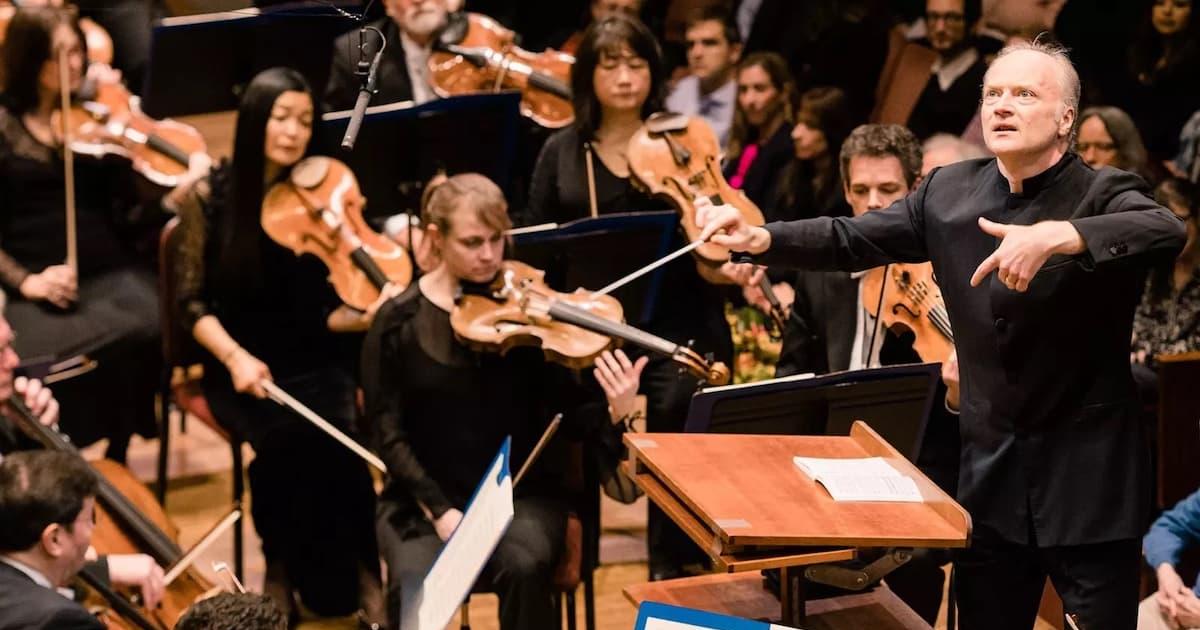
Carmel Institute Offers Free Tickets to Hear Prokofiev’s Rarely Performed 6th Symphony
The Carmel Institute provided 55 tickets to AU students and staff to hear Sergei Prokofiev’s Sixth Symphony, following Benjamin Britten’s Cello Symphony featuring NSO principal cello David Hardy on October 23, 2022.
Prokofiev wrote his Sixth Symphony in the wake of the Great Patriotic War (World War II). It fully reflects the roil of emotions that the war elicited: shock, determination, sadness, and hope for a new future. The work premiered in October 1947 with the Leningrad Philharmonic directed by Yevgeny Mravinsky. According to Mira Mendelson-Prokofieva, it was lauded as a glimpse into the “private world of modern man against the terrifying machinery of terrifying destruction.” The work and its composer ultimately fell prey to the political tides of Soviet-era music, with the same critics who lauded his 6th later attacking it as “formalist.” But the symphony was “reevaluated” during the Khrushchev years when it was once more praised as patriotic and a “true war symphony,” according to Daniel Tooke’s recent work. Most agree that Prokofiev’s 6th is musically challenging and rarely staged, making this opportunity at the Kennedy Center even more valuable for students.
Look over the Kennedy Center’s digital program for more on the concert.
Hear Prokofiev’s 6th Symphony by The Scottish National Orchestra, Neeme Järvi conducting.
For more information on the history of Prokofiev’s Sixth Symphony:
Mira Mendelson-Prokofieva, О Сергее Сергеевиче Прокофьеве. Воспоминания. Дневники (1938–1967) (in Russian). Москва: Композитор, 2012, 327.
Daniel Tooke, "Prokofiev and the Soviet Symphony." In McAllister, Rita; Guillaumer, Christina (eds.). Rethinking Prokofiev. Oxford: Oxford University Press, 2021. 55.
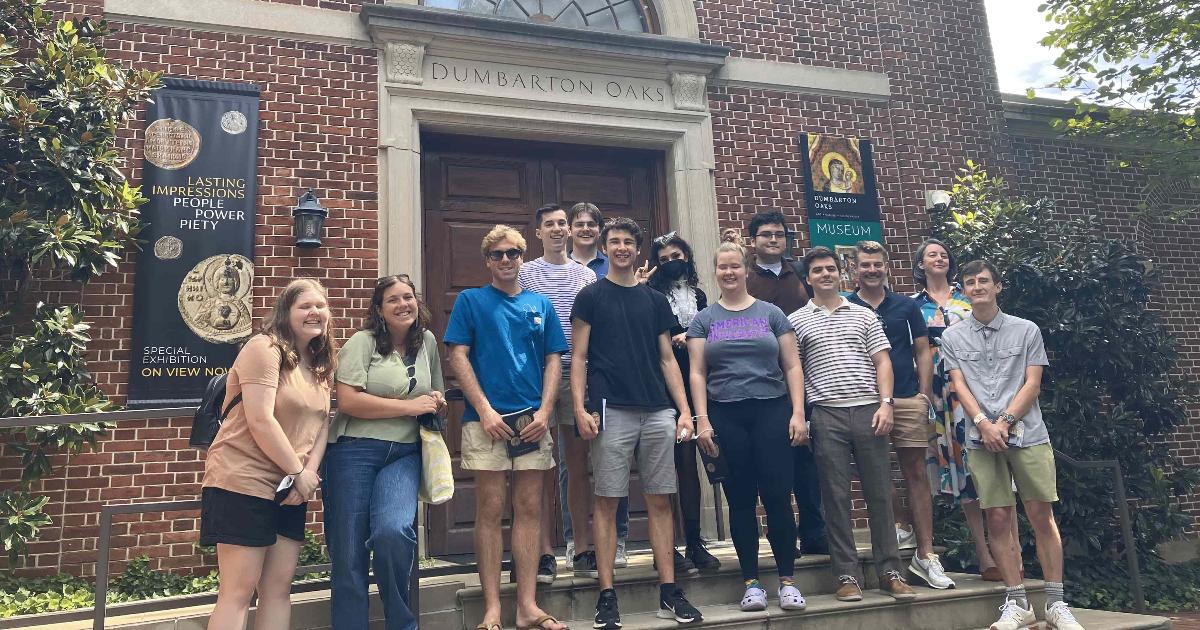
Carmel Institute Takes Students to Dumbarton Oaks
On Saturday, September 10, 2022, the Carmel Institute organized a trip to one of Washington’s most unique museums, Dumbarton Oaks, for the students in AU's History Majors Seminar this semester. The trip enabled the class to take advantage of the museum's Byzantine and Muscovite documents and objects to gain a deeper understanding of the course readings. They also enjoyed a delicious lunch at Café Divan nearby.
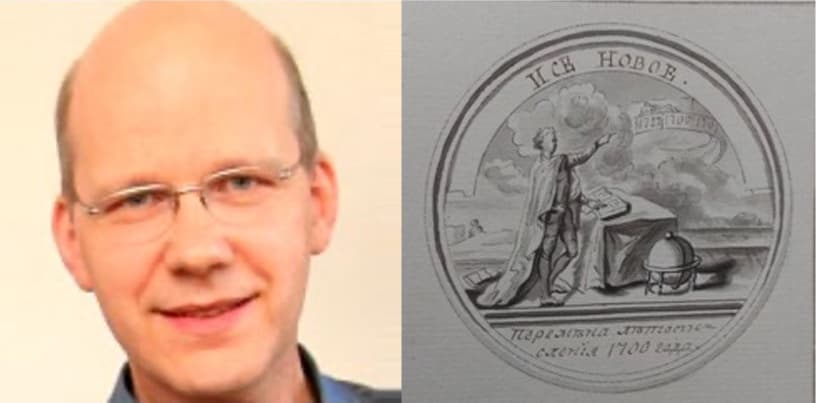
Peter’s Calendar Reforms and the Plurality of Time.
The Institute celebrates the 350th anniversary of Peter the Great's birth with Dr. Andreas Schoenle.
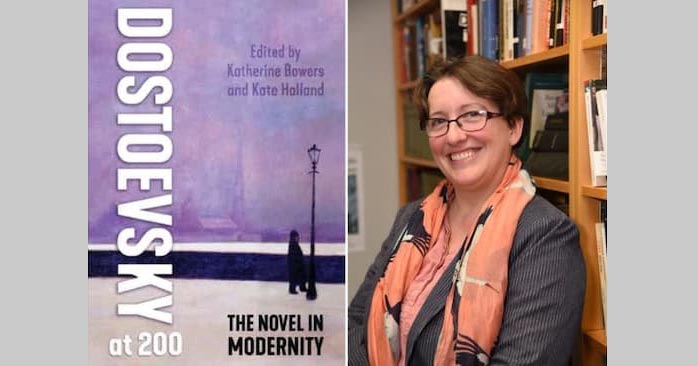
Dostoevsky at 200: The Novel in Modernity
Our Dostoevsky book talks continue with Dr. Kate Holland.
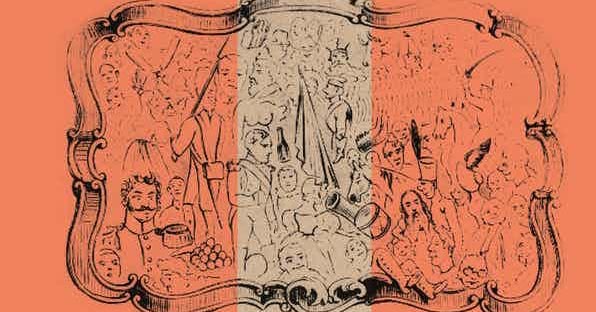
Mimetic Lives with Dr. Chloe Kitzinger
The Carmel Institute continues its series of book talks celebrating the 200th aniversary of Dostoevsky's birth.
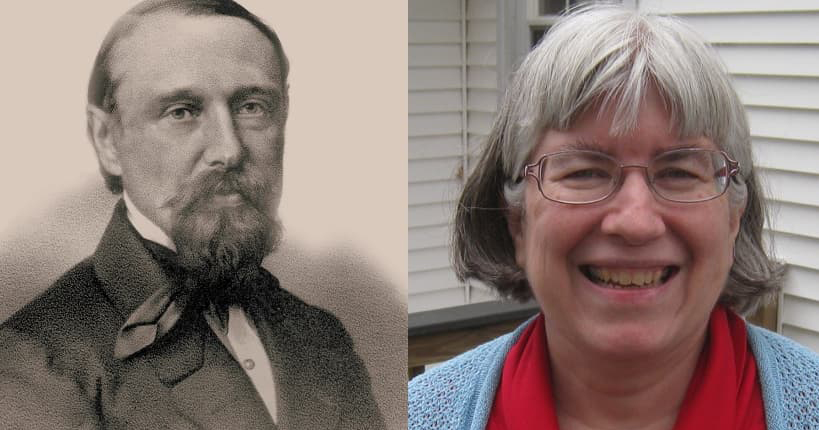
Dostoevsky's Literary Partnership with Editor Mikhail Katkov
Our book talk series continues with Susanne Fusso.

The Image of Christ in Dostoevsky's Russia
Our book talk series continues with Dr. John Givens on Dostoevsky, Tolstoy, Bulgakov, Pasternak.
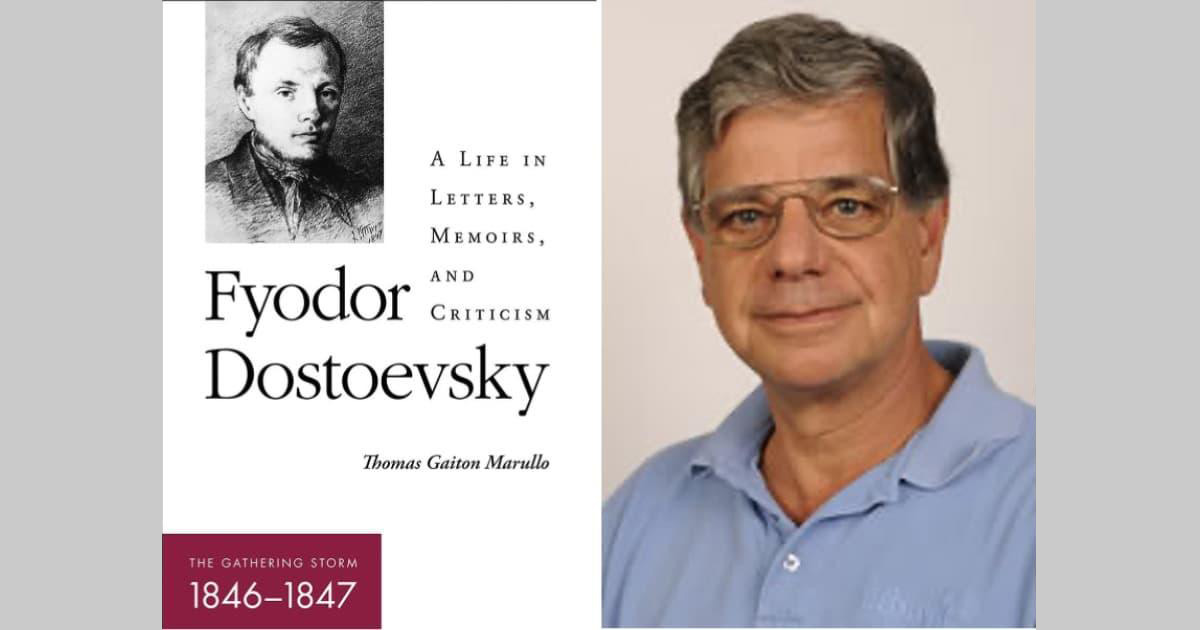
"Dostoevsky Life and Letters" Book Talk with Dr. Thomas Marullo
The Carmel Institute begins its year-long series
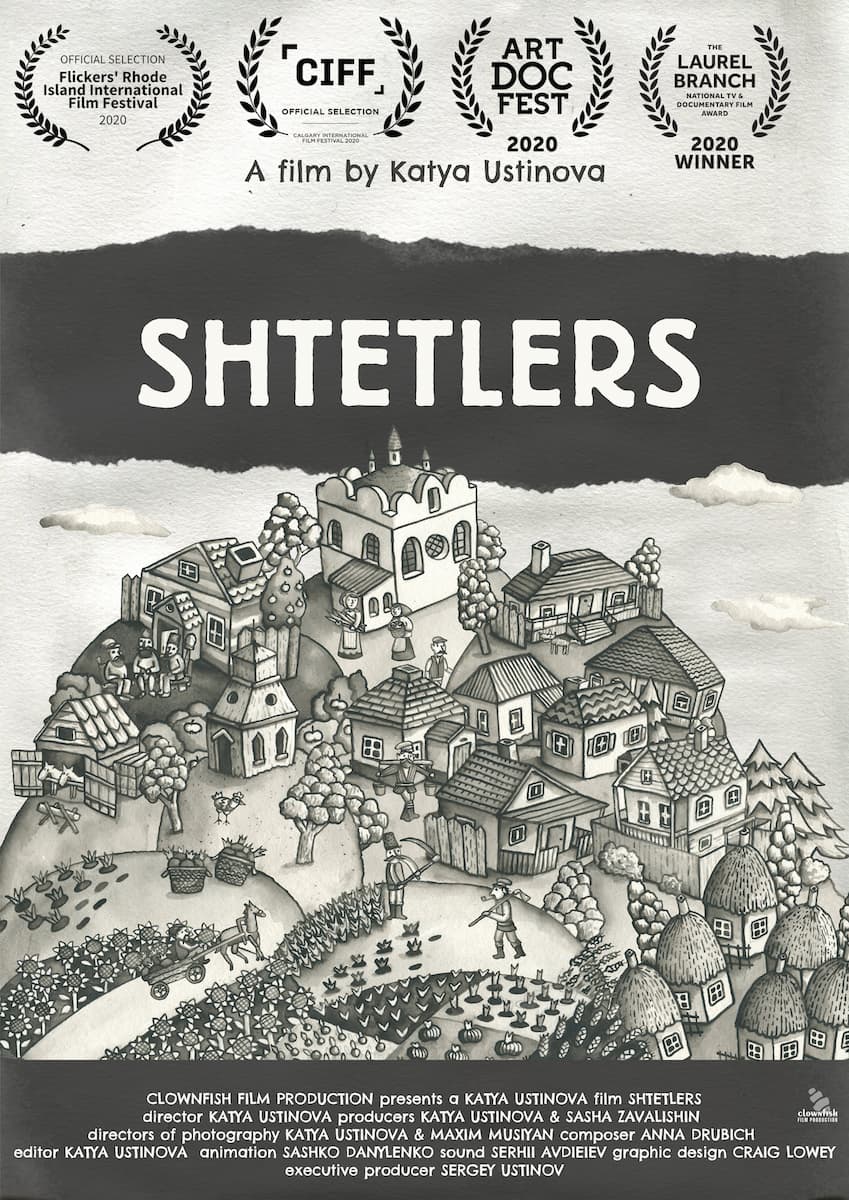
Students See the American Premiere of Russian Documentary Shtetlers
In January 2021, the Carmel Institute purchased a bloc of student tickets for the virtual American premier of Katya Ustinova’s documentary film Shtetlers (Штетл, 2020), which was part of Russian Film Week in New York City.
Shtetlers explores life of small Jewish towns in the former Russian Empire and the Soviet Union. Called shtetls, these towns were once home to the largest Jewish population in the world. Only a few survived the Holocaust, and those that did were all located in the territory of modern Ukraine and Moldova. Hidden from the world outside behind the Iron Curtain, traditional Jewish life continued for decades after it disappeared everywhere else. The tight-knit communities supported themselves by providing goods and services to their non-Jewish neighbors. Judaism, the Yiddish language and folklore, ritualized cooking and elaborate craftsmanship were practiced, treasured, and passed through the generations until very recently.
The film follows nine people, most now scattered around the world, who once belonged to the Jewish and non-Jewish shtetl communities. Their memories are a farewell to the vanished world of the shtetl, a melting pot of cultures that many nations once called their home.
Katia Ustinova, a New York-based filmmaker with a degree in Social Documentary from the School of Visual Arts in NYC, grew up in Moscow in what she calls a “literary family.” While her playwright grandfather was Jewish, her family did not engage with their Jewish identity much until her father, Sergei Ustinov, a businessman and art collector, founded the Museum of Jewish History in Moscow in 2012. Ms. Ustinova participated in a live Q&A with our guests after the screening.
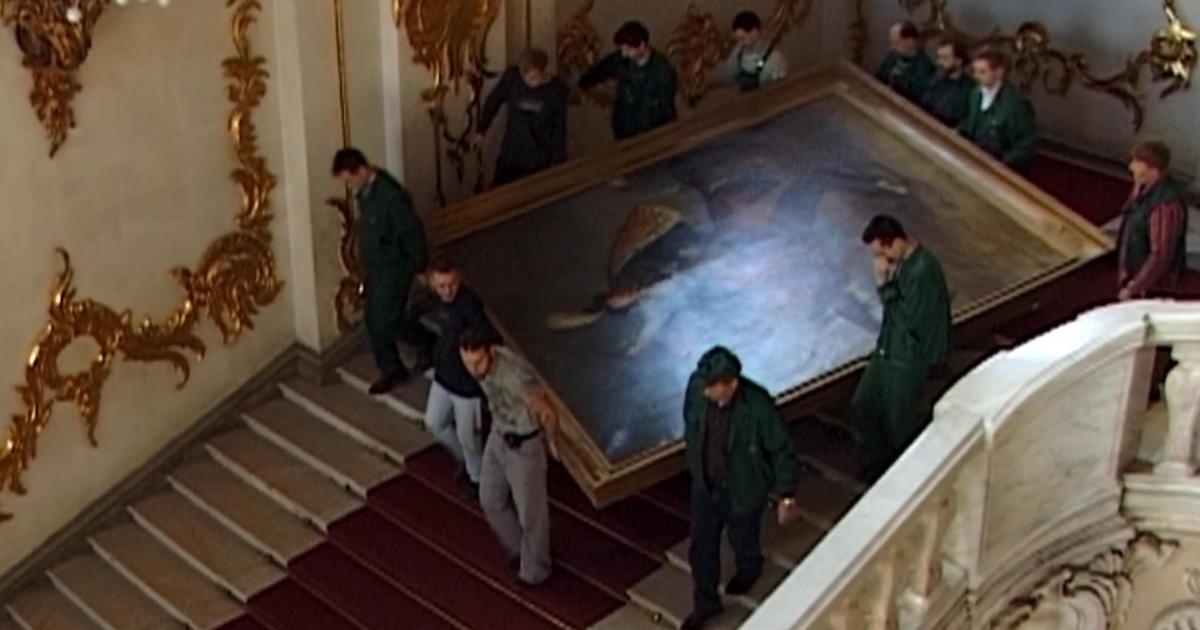
“The Hermitage Dwellers” Screening and Panel Discussion
On October 29, 2020, the Carmel Institute made available the documentary film The Hermitage Dwellers (2004) for online guests and then hosted a webinar with the Director of the Hermitage Museum, Mikhail Borisovich Petriovsky, as well as the film’s writer and director Aliona Van Der Horst. The film tells the story of the people who protected and preserved one of the world’s premiere museum collections. Attendees learned how the Hermitage Museum in St. Petersburg, Russia, preserved its collection during World War II by sending it to Sverdlovsk (now Ekaterinburg). The narrative is based on original footage and the personal accounts of the staff members who lived through the siege of Leningrad. The staff also spoke about how they and others continue to take great care of the second-largest museum collection in the world and what the art they care for means to them. After viewing the film, Mr. Petriovsky and Ms. Van Der Horst shared behind-the-scenes stories and discussed how museums are centers of scholarship and cultural understanding.
Roy R. Behrens reviewed both the film and the five-episode miniseries upon which the film is based in the Winter 2005-2006 edition of the Ballast Quarterly Review (v. 21, no. 2). He described the film as "…powerful" and lauded both the filmmakers and the Hermitage staff featured in the film, writing: “Somehow, by whatever miracle, this place and its treasures have always survived and continue to do so now through the generous work of the museum staff.”
For more, see the Icarus Films page for The Hermitage Dwellers.
Read Roy R. Behrens' review of The Hermitage Dwellers documentary film (2004) and “Hermitage-niks: A Passion for the Hermitage,” the 2003 five-episode original series the film excerpt (excerpt publicly available; Project Muse access required to read the full review).
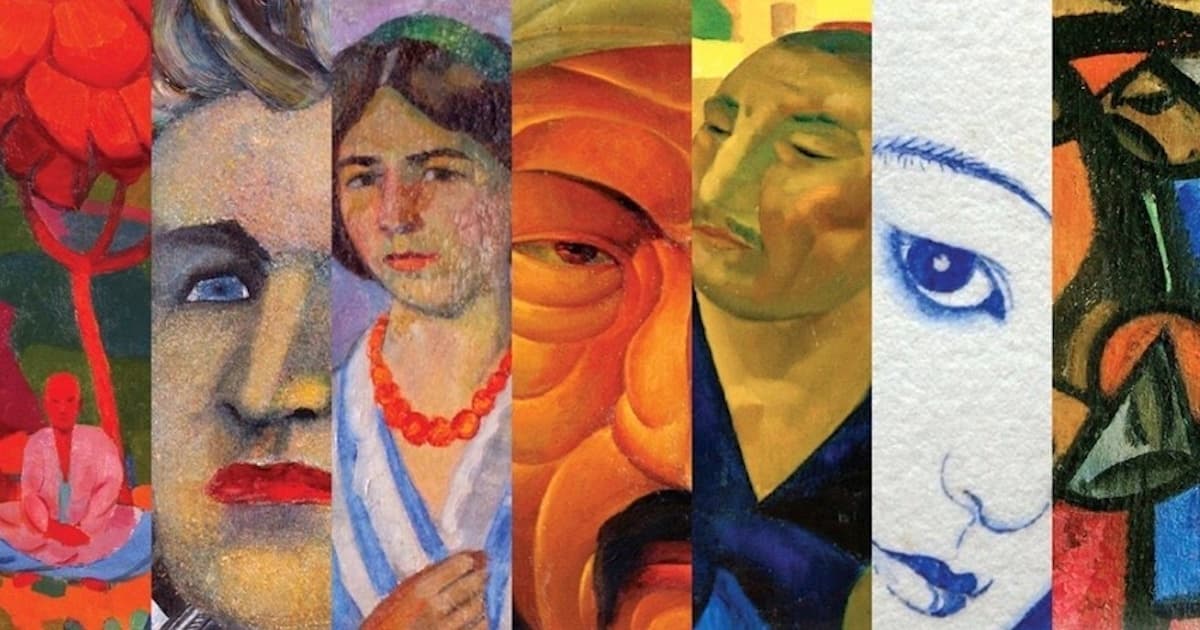
“The Desert of Forbidden Art” Screening and Panel Discussion
On October 1, 2020, the Carmel Institute held its first virtual event, making the documentary film The Desert of Forbidden Art available online for guests. The film tells the remarkable story of how failed artist Igor Savitsky created one of the world's great collections of Russian avant garde art in the Karakalpak desert. The New York Times described the film as "A gorgeous documentary. The filmmakers let the art do the talking, with loving, lingering shots of the brightly colored works." The Institute brought together the documentary filmmakers and a historian of the museum at the center of the film in a Zoom webinar for a post-viewing question-and-answer session discussing the filmmaking process, the museum’s unique history, and the museum’s ongoing work today.
Read more about the Desert of Forbidden Art event.
Watch the full Desert of Forbidden Art event video.
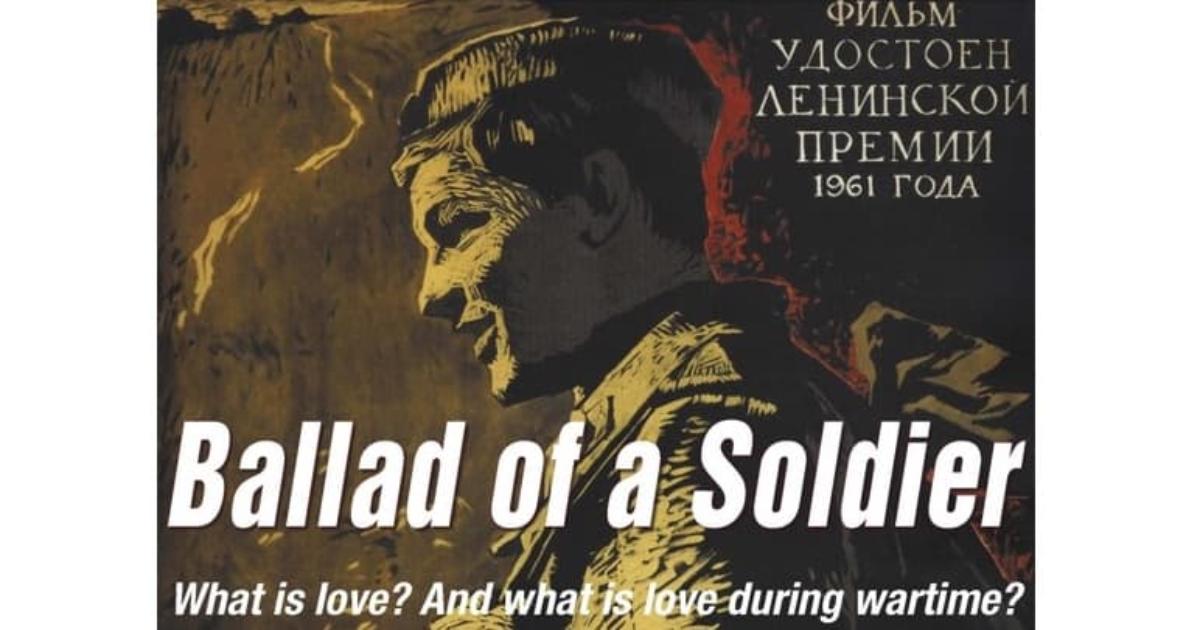
A World War II movie that's not truly about war...
On March 2, 2020, the Carmel Institute screened director Grigori Chukhrai's Ballad of a Soldier (1959) in Russian with English subtitles. The film follows a young Soviet Army private on a pilgrimage home from the front lines of the Great Patriotic War / World War II. Along the way, he encounters various symbols of love: a young couple, a married couple, a mother and child, and then falls in love himself. Winner of the BAFTA Award for Best Film and nominated for an Oscar for Best Original Screenplay, Chukhrai's timeless Everyman tale, brimming with poetic visual imagery, has been hailed as a milestone in Russian Cinema.
After a delicious pre-film buffet reception for our nearly 300 guests, Professor Eric Lohr, Director, Carmel Institute of Russian Culture & History introduced the film and moderated a stimulating post-film Q&A with Professor Stephen Norris, Director, Havighurst Center for Russian and Post-Soviet Studies at Miami University of Ohio. After the Q & A, guests enjoyed their choice among desserts with coffee and tea options while they discussed the film and its symbolic message.
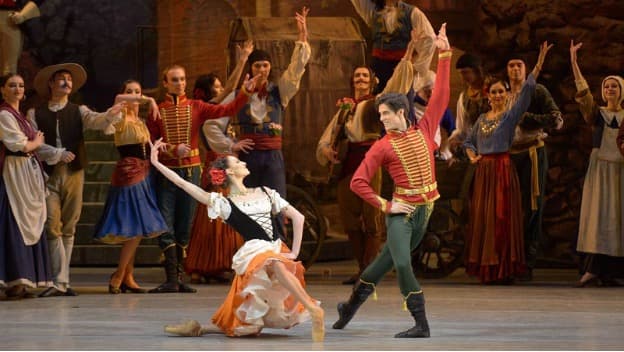
Students Enjoy the Acclaimed Mariinsky Ballet Performing Paquita at the Kennedy Center
The Carmel Institute provided 150 tickets to students from the Consortium of Universities of the Washington Metropolitan Area to see the Mariinsky Ballet’s performance of Paquita October 11, 2019. The creation of French composer Édouard Deldevez and Paris Opéra Ballet Master Joseph Mazilier, Paquita was first presented at the Salle Le Peletier by the Paris Opera Ballet on 1 April 1846 and was retained in the repertory of the Opéra until 1851. In 1847, Marius Petipa and Pierre-Frédéric Malavergne staged Paquita for the first time in Russia for the Imperial Ballet of St. Petersburg. It also became the first work ever staged by Petipa in Russia. In 1881, Petipa produced a revival of the ballet for which he added new pieces specially composed by Ludwig Minkus.
See a video clip of the Mariinsky Ballet's Paquita.
See the Kennedy Center's feature on Paquita.
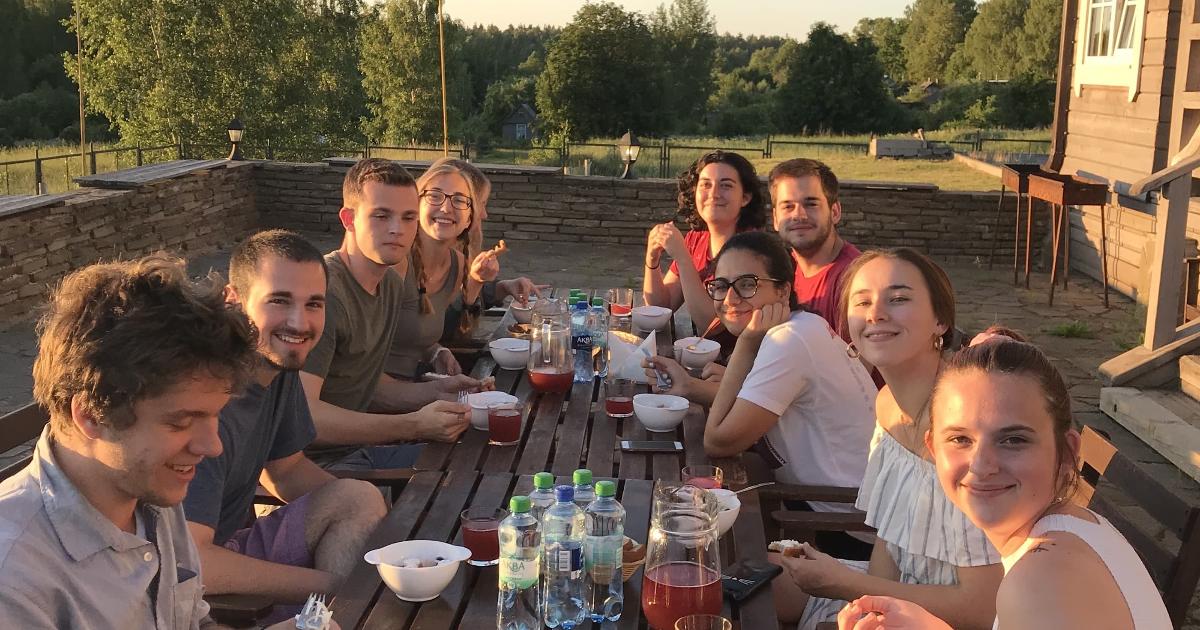
Students Discover "Pushkin's Russia"
The Carmel Institute sponsored 10 students from AU, Georgetown and George Washington University to spend 10 days in Russia in Summer 2019 for the AU history course "Pushkin's Russia: Literature and the Birth of National Identity." To better understand the post-Napoleonic era, they read Pushkin, of course, but also other authors, while they explored Russian museums and art galleries, took in ballet and concert performances, and visited Pushkin's own estate in the Pskov region.
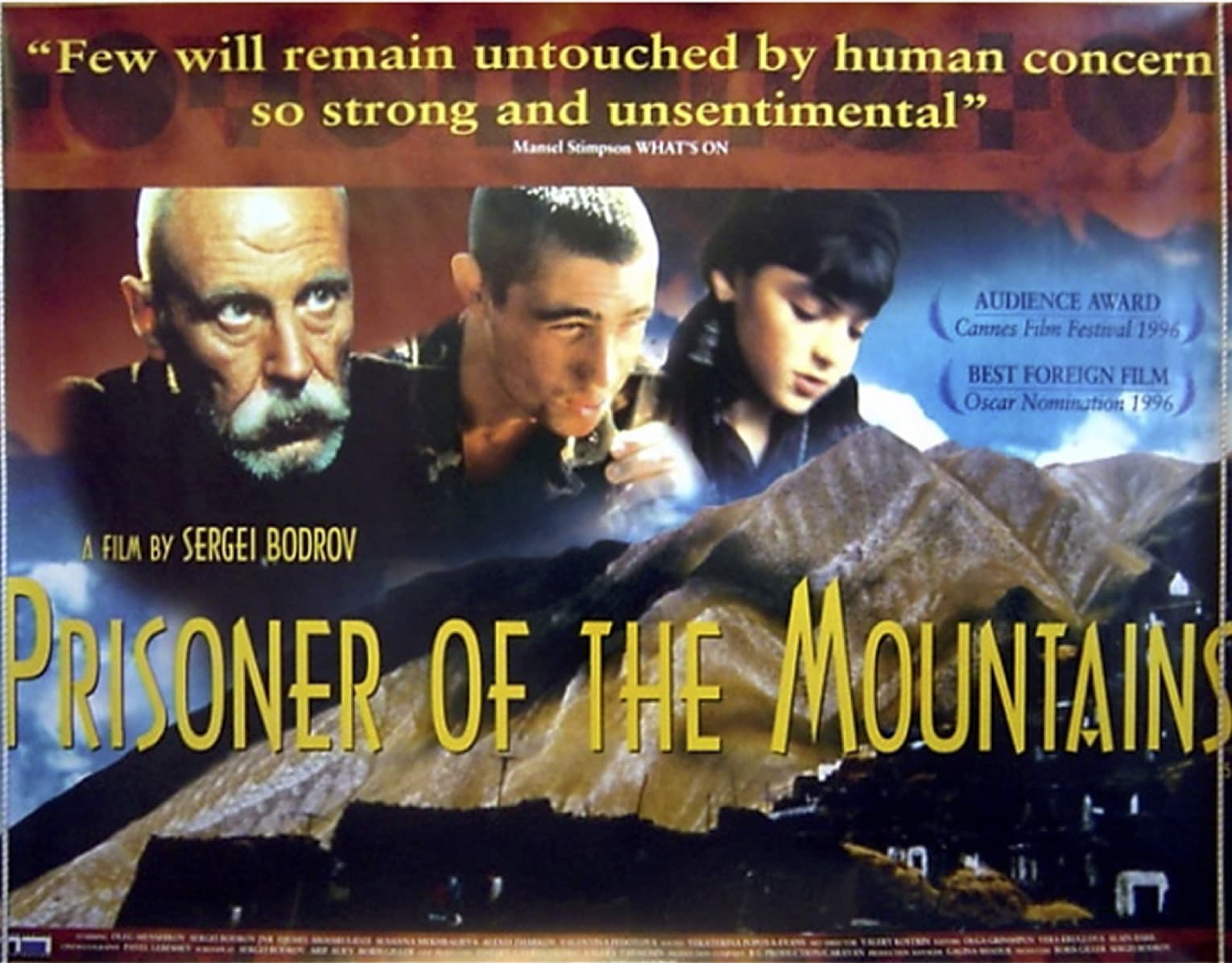
Sergei Bodrov’s Prisoner of the Mountains Film Screening
On Wednesday, April 17, 2019, the Carmel Institute held a screening of Sergei Bodrov’s Prisoner of the Mountains (1996) for university students, faculty and community members. The audience gathered at the Russian Embassy to enjoy a fabulous evening of delicious Russian food and cinema. Based on a short story by Leo Tolstoy, the film poses penetrating questions about conflict and power, humanity and cruelty, and the sometimes-thin line between a friend and an enemy. While on patrol in the Caucasus mountains, two Russian soldiers become the prisoners of a Chechen village. The tribal leader of the colony is willing to release the pair unharmed in exchange for his son, who is a prisoner in the custody of the Russians. After writing to their mothers to announce the terms of their imprisonment, the duo are powerless to do anything but wait for an answer while adjusting to life in the remote enclave of their captors.
Nominated for an Academy Award for Best Foreign Language Film, Prisoner of the Mountains received rave critical and audience reviews worldwide.
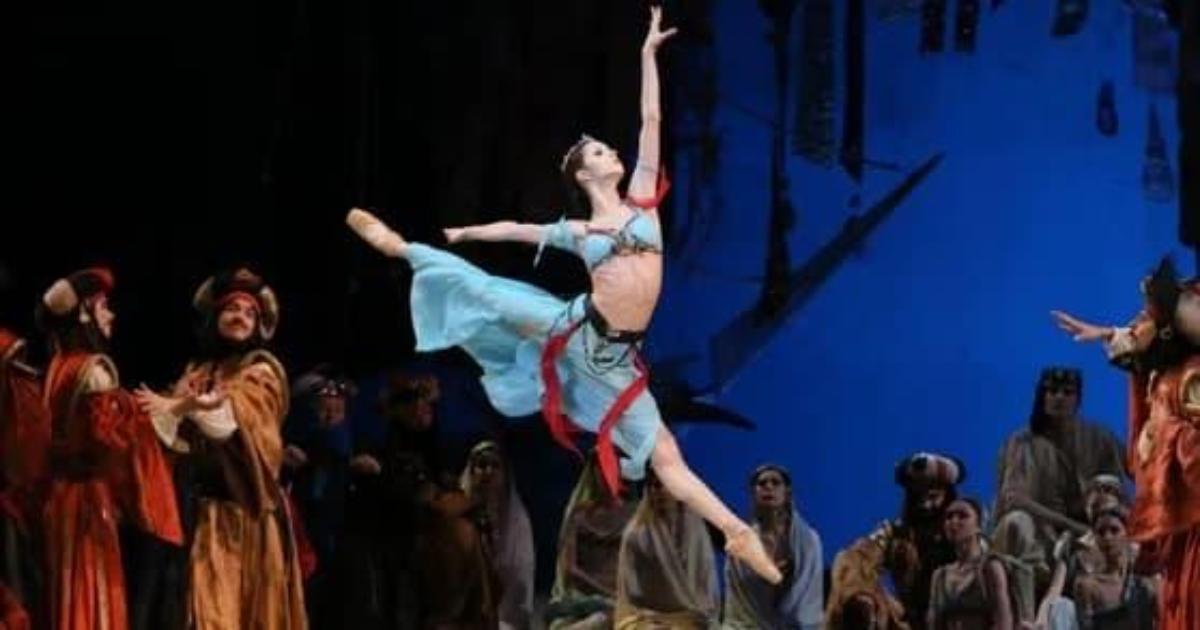
Students See the Acclaimed Mariinsky Ballet's Le Corsaire at the Kennedy Center
The Carmel Institute provided 80 tickets to American University students to see the Mariinsky Ballet’s performance of Le Corsaire on April 13, 2019. While the ballet was first performed in Paris in 1856, all of today’s productions are based on Franco-Russian ballet master Marius Petipa’s staging of the three-act ballet in the mid-19th century. Petipa himself danced the lead male role of Conrad for the Imperial Ballet of St. Petersburg in the production’s 1858 Russian premier, where he first began to reshape the choreography of the role. Petipa later went on to stage four major productions of the ballet, adding dances each time to enhance the appeal for audiences. The final Petipa revival was at the Imperial Mariinsky Theater in January 1899, but it has been performed in Russia throughout the 20th century and as recently as 2007 by the Bolshoi Ballet.
In its review of the performance the American University students saw, Broadwayworld.com lauded: “Mariinsky Ballet’s reputation for elaborate productions and incredible dances is well-deserved, and there are some standout performances throughout the current production that certainly live up to the company’s renowned reputation.”
See the Mariinsky Ballet’s trailer for Le Corsaire at the Kennedy Center
See the full Broadwayworld Review
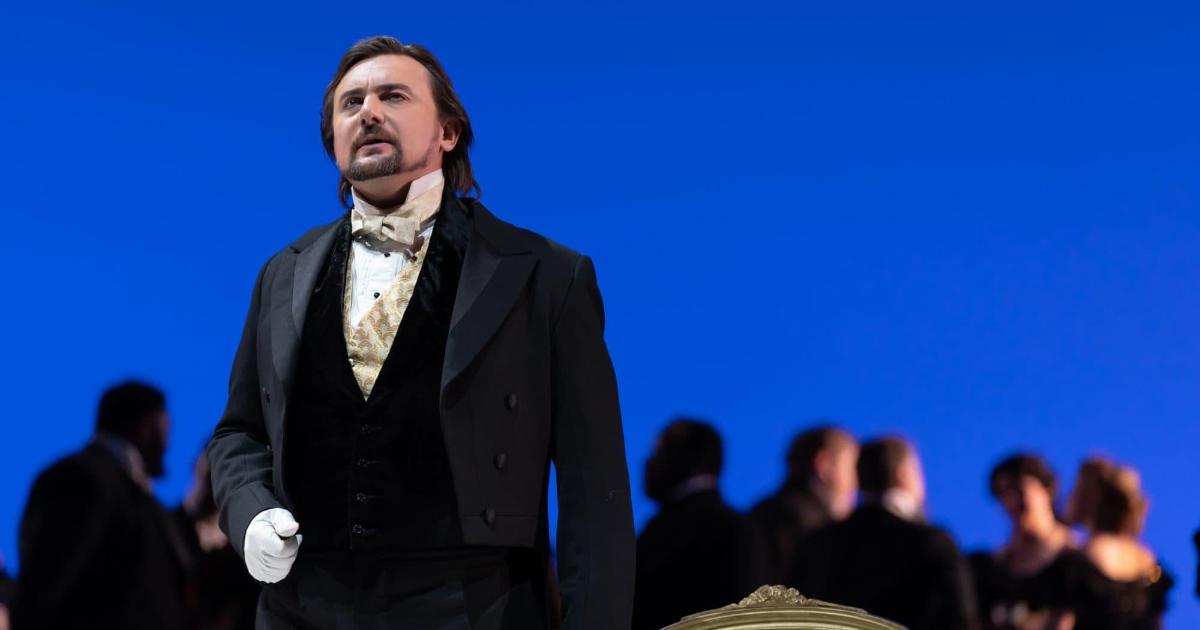
DC Consortium Students See Tchaikovsky's Eugene Onegin at the Kennedy Center
On March 23, 2019, the Carmel Institute provided 80 tickets to students from the Consortium of Universities of the Washington Metropolitan Area to see the Washington National Opera’s performance of Eugene Onegin. Broadwayworld.com described the WNO’s production as “exquisite… with pitch-perfect performances led by the immaculate Anna Nechaeva as Tatiana.”
The opera brought the talents of two of Russia’s great artists together: the towering Russian poet Alexander Pushkin and Pyotr Ilyich Tchaikovsky. The resulting lyric opera, with Tchaikovsky writing the music and adapting Pushkin’s fabled verse with a little help from his friend Konstantin Shilovsky, tells Onegin’s and Tatiana’s stories episodically from the novel’s story.
Due to its non-linear storyline, Tchaikovsky worried about its reception and therefore gave it to Moscow Conservatory students to stage in 1879. His worries were obviously unfoundedm and the Bolshoi Theater premiered it in 1881. It has been more than 30 years since the WNO has performed it.
See the full Broadwayworld.com review of the WNO production.
Get a glimpse of Anna Nechaeva’s brilliant performance as Tatiana.
Watch a clip of Igor Golovatenko’s take on the title character.
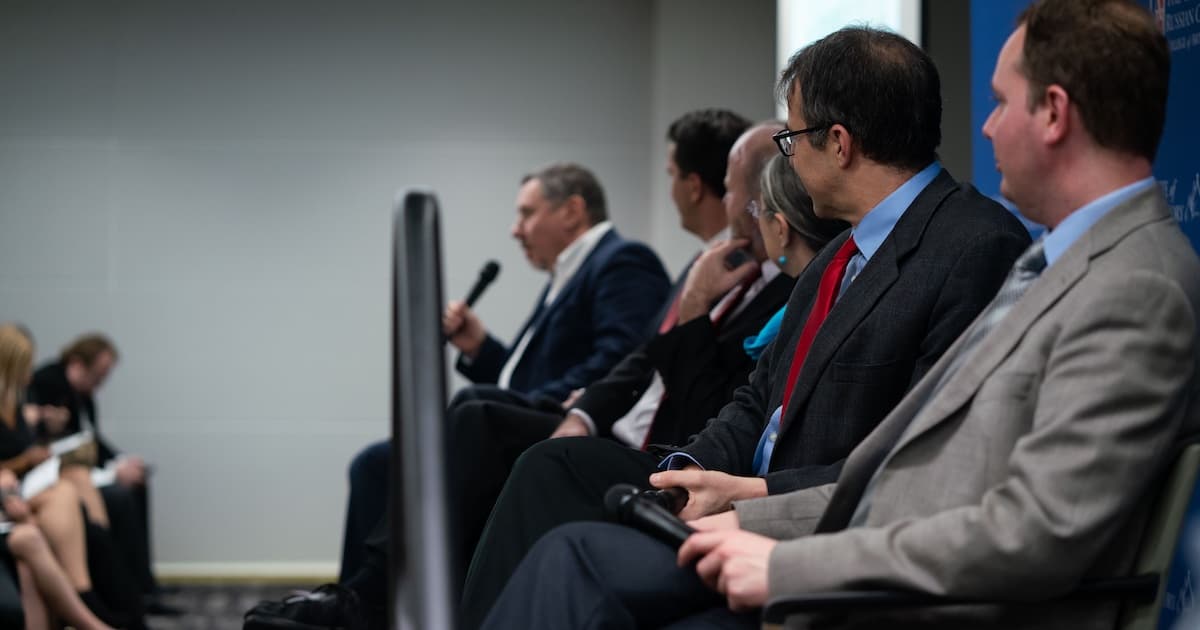
Carmel Institute and RASA co-host "Armistice and Revolution: Russia and the World 1918" Symposium Marking 100th Anniversary
The Carmel Institute and the Russian-American Scientists’ Association (RASA) co-sponsored a symposium marking the centenary of the end of World War I with a symposium called “Armistice and Revolution: Russia and the World in 1918.” We were proud to host Borislav Chernev, Elizabeth Wood of MIT, David Engerman of Yale University, and Alexei Miller of the European University of St. Petersburg at Constitution Hall at AU.
Read more about the symposium.
Watch the full Armistice and Revolution symposium video.
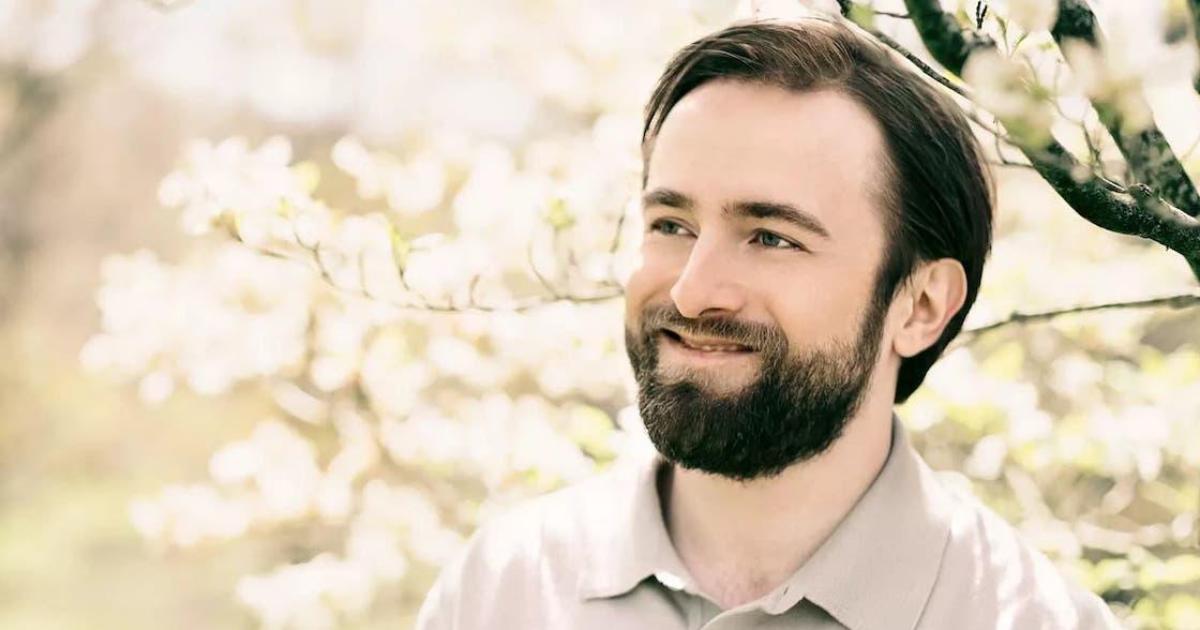
DC Consortium Students Hear Rare and New Russian Compositions at the Kennedy Center
The Carmel Institute supplied tickets for 120 students of Washington, DC universities to experience a unique evening incorporating rarely performed and new Russian music on November 12, 2017. The Mariinsky Orchestra’s program began with Russian futurist composer Alexander Mosolov’s “Iron Foundry” (“Zavod”) and then moved on to the only surviving portion of his 1927 ballet “Steel” (“Stal”). The program also featured Daniil Trifonov on piano and included Trifonov’s own 2014 composition, “Piano Concerto in E flat minor.”
Mosolov is among the “forgotten Russians” who composed in the exciting and highly experimental period of the Soviet during the first two decades of the 20th century. “Iron Foundry” was first performed in 1927 in a concert that included fellow “forgotten Russian” composer Nikolai Roslavet’s “October.” Edwin Evans described “Iron Foundry” as a “song of steel” in 1930 and the piece earned ovations at its 1931 Hollywood Bowl performance. Metallica also staged it with the San Francisco Symphony Orchestra under Michael Tilson Thomas in 2019.
The Carmel Institute and PostClassical Ensemble explored Mosolov, Roslavets, and other artists at the heart of Soviet artistic experimentation in the 1920s in our sixth annual symposium, “The Russian Experiment,” in October 2017.
See Metallica and the San Francisco Symphony Orchestra perform “Iron Foundry" in 2019.
See Trifonov’s piano concerto with the Detroit Symphony Orchestra in November 2017
For more information on Mosolov:
Edwin Evans, “The Liége Festival.” The Musical Times, vol 71: 1052, October 1, 1930, p 901. JSTOR link for those with access.
Larry Sitsky, Chapter 5: “Aleksandr V. Mosolov: The Man of Steel.” Music of the repressed Russian avant-garde, 1900-1929, Greenwood Press, Westport, CT: 1994, p 61. Available on Internet Archive.
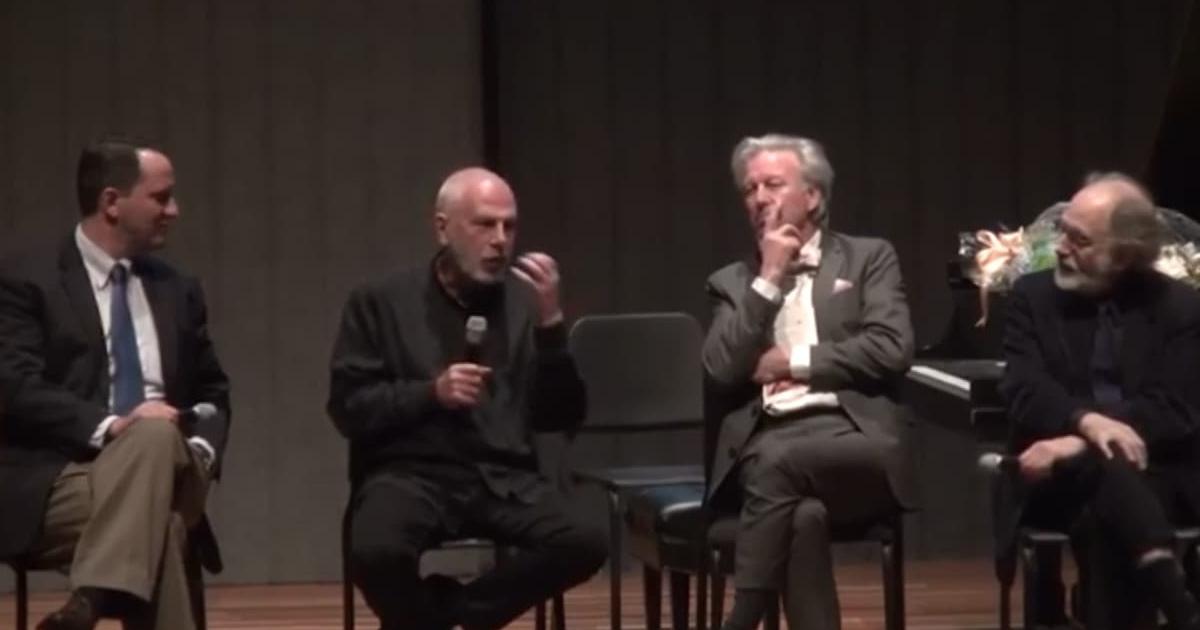
Carmel Institute and PostClassical Ensemble Co-host "The Russian Experiment" Symposium on Russian Cultural Innovations in the Early 20th Century
The Carmel Institute and PostClassical Ensemble presented an innovative symposium to explore the impacts of the Russian Revolutions of 1917 on the arts on October 19, 2017. The symposium integrated traditional presentations with brilliant musical performances from piano virtuoso Vladimir Feltsman and cellist Ben Capps. The symposium examined how Russian composers Scriabin, Mosolov, Roslavets, and Protopopov and artists like Vrubel, Lissitsky, Larionov and Goncherova, Malevich, Popova, Meyerhold, Tatlin, Vertov, and Eisenstein broke new ground in music, architecture, textile arts, and the visual arts of painting and film. The panelists also discussed how these exciting artistic movements intersected with Russian political and historical events in the 1920s.
Read about the event in more detail.
Watch the full symposium video.
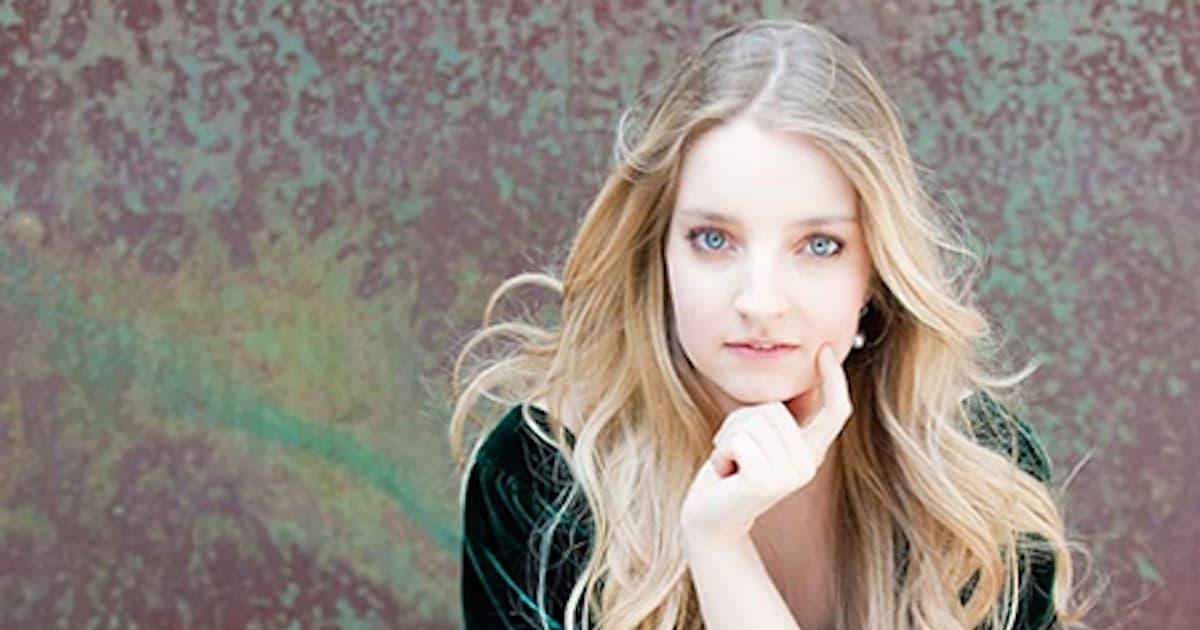
DC Consortium Students Hear Prokofiev and Shostakovich at the Kennedy Center
On April 7, 2017, the Carmel Institute purchased 180 tickets for students from the Consortium of Universities of the Washington Metropolitan Area to enjoy soloist Lise de la Salle performing Prokofiev’s Piano Concerto No. 1. Followed by Shostakovich’s Fifth Symphony, the concert was part of the NSO’s “A Salute to Slava,” honoring the late NSO Music Director Mstislav Rostropovich.
Prokofiev wrote his first piano concerto in 1912 and performed in its Moscow premier himself. The young composer and performer won the Anton Rubinstein Prize for this work two years later, playing it again with the Saint Petersburg Conservatory in 1914.
Dmitri Shostakovich wrote his Fifth Symphony in early 1937 set to an Alexander Pushkin poem about rebirth (“Vozrozhdeniye”). According to history writer Solomon Volkov, the Leningrad Philharmonic Orchestra’s premiere of the work that November evoked an ovation lasting over a half an hour. Shostakovich’s Fifth Symphony marked the beginning of a somewhat rocky rehabilitation with Soviet authorities that culminated in Shostakovich becoming General Secretary of the Russian Republic’s Union of Composers from 1960 to 1968.
For more on the performance and audience experience that night, read Patrick Rucker’s Washington Post review of the concert.
Kristin Franco’s review for the MD Theater Guide provides more information about the works and composers themselves as well as the performance.
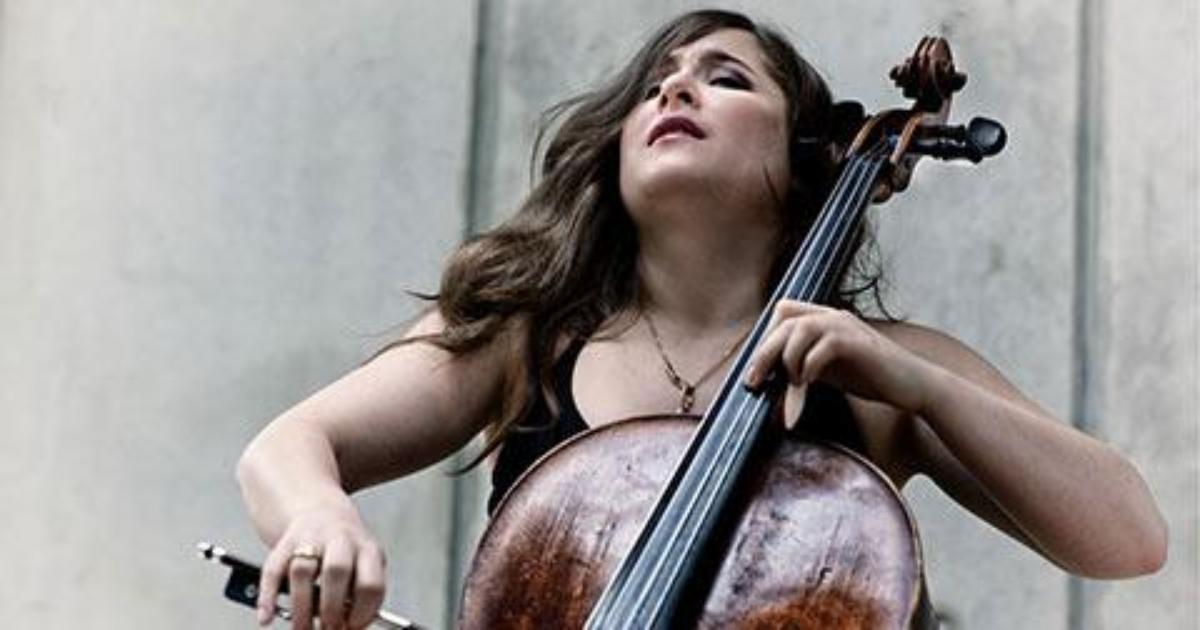
Students Experience Shostakovich's Cello Concerto No 1, Written for Late NSO Music Director Rostropovich
The Carmel Institute offered 92 tickets to students from the Consortium of Universities of the Washington Metropolitan Area to hear the National Symphony Orchestra perform Dmitri Shostakovich’s Cello Concerto No. 1, featuring cellist Alisa Weilerstein on March 11, 2017. The program also included Schubert's Ninth Symphony and Tobias Picker's Old and Lost Rivers. The concert continued the NSO’s “Salute to Slava,” honoring former NSO music director Mstislav Rostropovich. It also served as a rehearsal for the NSO’s tour of Russia for the Rostropovich Festival in Moscow and St. Petersburg at the end of the month, the first time an American orchestra had performed in that festival.
Shostakovich wrote his Cello Concerto No. 1 in 1959 and it premiered with Rostropovich himself as the soloist four days after completion with the Leningrad Philharmonic Orchestra. Two days later, Rostropovich performed it again with the Moscow Philharmonic to make the first recording of the work. In fact, Shostakovich wrote both this concerto and his second cello concerto specifically for Rostropovich, who had studied under Shostakovich at the Moscow Conservatory from 1943 to 1948. After graduating, Rostropovich became the composer’s colleague as a professor at the Conservatory. And they remained personal friends until Shostakovich’s death in 1975.
For more information about the festival as well as the NSO’s distinguished history of cultural diplomacy with Russia, see this Washington Post article “ ‘There’s still high culture in America’: Why the National Symphony Orchestra went to Moscow,” by Anne Midgette.
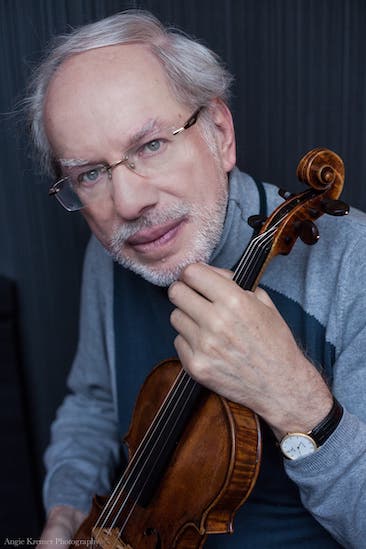
DC Consortium Students Experience "A Salute to Slava" at the Kennedy Center
The Carmel Institute purchased tickets for 92 university students from the Washington Consortium and their guests to enjoy a Saturday-evening National Symphony Orchestra performance of Dmitri Shastokovich’s Symphony No. 8 in C Minor, Op. 65 and Mieczyslaw Weinberg’s Violin Concerto in G major, Op. 67 on January 28, 2017. “A Salute to Slava,” the concert commemorated what would have been Mstislav “Slava” Rostopovich’s 90th birthday and honored his 17-year service as music director of the NSO. The Washington Post called it "...a monumental and sobering salute to its former music director."
Rostopovich's friend Shostakovich wrote his 8th, better known as the “Leningrad Symphony,” under the pressure of the Great Patriotic War in the summer of 1943, and the USSR Symphony Orchestra performed it for the first time that November. The pairing of works recreates the feeling for this time in Soviet and European history, as Shostakovich and Weinberg were friends who lived near each other in war-time Moscow.
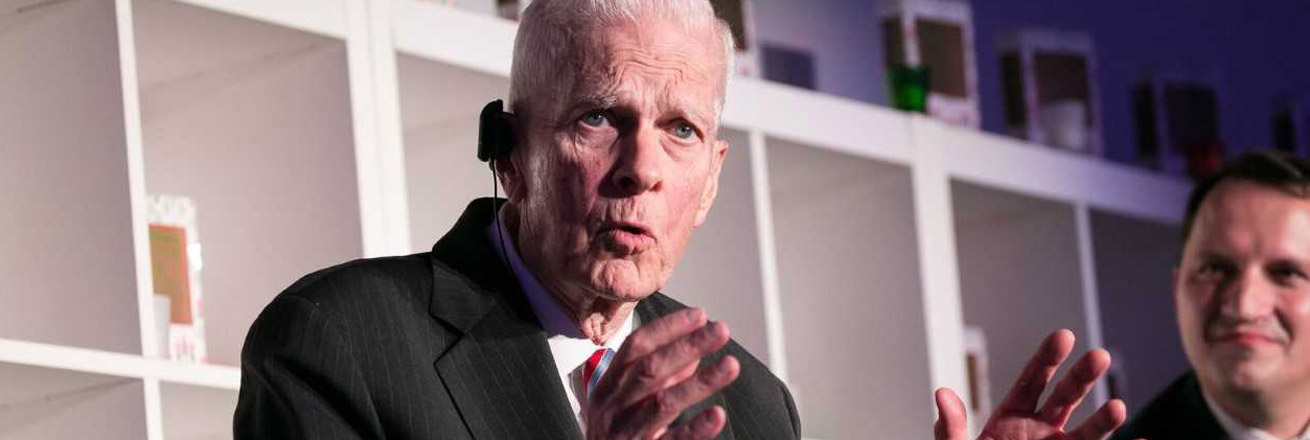
Symposium to Honor Dr. James Billington and his Groundbreaking Work on Russian culture, “The Icon and the Axe.”
On November 16, 2016, the Carmel Institute, The Kennan Institute at the Wilson Center, and the Association for Slavic, East European, and Eurasian Studies co-sponsored an evening to honor Dr. Billington’s lifetime of work and contributions to the study of Russian culture on the fiftieth anniversary of the publication of his magnum opus “The Icon and the Axe.”
Dr. James H. Billington earned his PhD in Russian history at the University of Oxford, then taught history at Harvard and Princeton. In 1973, he was director of the Woodrow Wilson Center. Billington left the Wilson Center when President Reagan nominated him to be Librarian of Congress in 1987 and the Senate confirmed him unanimously. He led the Library of Congress until his retirement in 2015. While Librarian, he started to digitize of many Library materials and he launched a massive effort to preserve the Library’s holdings for future generations.
Read more about the symposium and watch the full symposium video.
Watch the highlights from the night.
Learn more about Dr. Billington’s work and standing in Russian cultural history from Diplomatic Courier’s interview with the man himself.
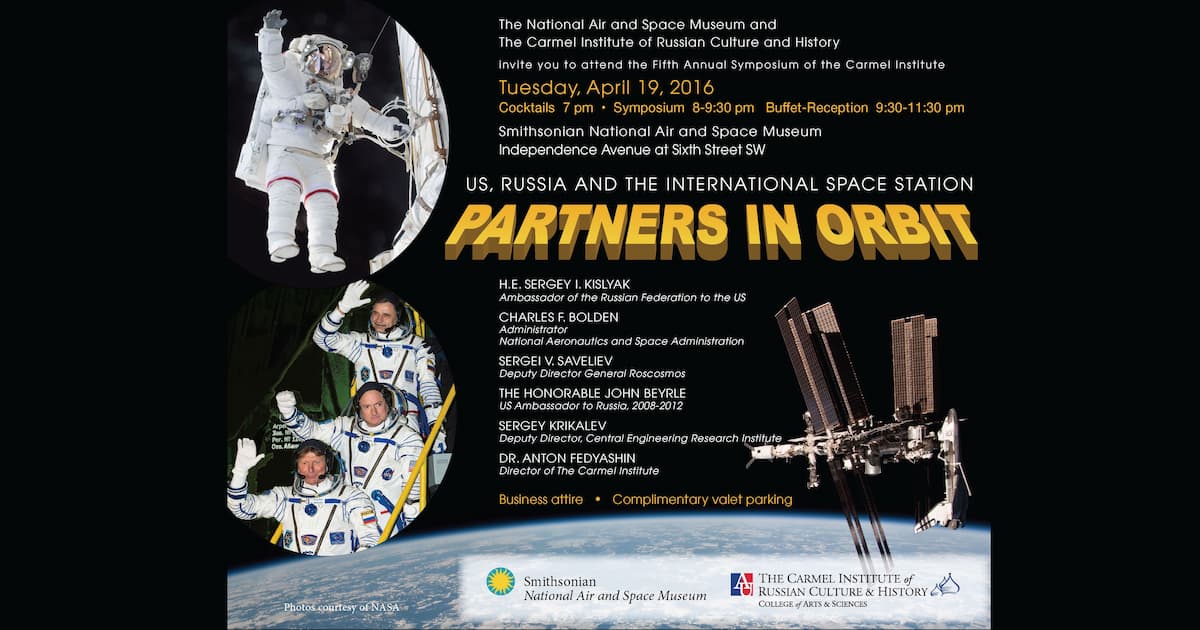
The Global Benefits of International Cooperation: the Institute’s 2016 “Partners in Orbit” Symposium
The Carmel Institute held its 2016 symposium “Partners in Orbit” at the Smithsonian Institution’s National Air and Space Museum in Washington, DC. It explored and highlighted the ways international cooperation made possible the International Space Station and the benefits it has brought everyone around the world.
Our impressive panel of speakers included:
Dr. Anton Fedyashin, Director of the Carmel Institute and Associate Professor at American University
His Excellency Sergei Kislyak, Ambassador of the Russian Federation to the United States
Russian Cosmonauts Yuri Melenchenko, Alexey Ovchinin, and Oleg Skripochka from the International Space Station (video remarks)
Charles F. Bolden, Jr., Administrator of the National Aeronautics and Space Administration and former crewmate of Sergey Krikalev
Sergei Saveliev, Deputy Director of Roscosmos, the Russian Space Agency
Sergey Krikalev, Deputy Director of Central Engineering Research Institute, former crewmate of Charles F Bolden, Jr. and cosmonaut who once held the record for the longest time in space
The Honorable John Beyrle, Jr., former Ambassador of the United States to the Russian Federation and Carmel Institute Advisory Board member
General Alexei Leonov, Russian cosmonaut and the first man to walk in space (video remarks)
The five-minute highlights video begins with footage of the pre-symposium donation presentation of a bust of Yuri Gagarin, the first human in space, from the Embassy of the Russian Federation to the Smithsonian. It is currently on display in the “Destination Moon” hall. The video then goes on to excerpts from the symposium speakers and glimpses into the post-symposium reception celebration, which included not only the speakers but also other astronauts and specialists from NASA interacting with over hundreds of Consortium students and other guests.
Learn more about U.S.-Russian cooperation in space over the last 40 years in our more detailed article, including the link to our full 71-minute symposium video.
Looking for older events? Check out our News & Events Archive.
Sharing the Hillwood Museum & Garden's Tsarist-era Russian collection
On Sunday, April 11, 2024, the Carmel Institute organized a tour of the Hillwood Estate, Museum & Gardens, which not only boasts two Faberge Eggs, but many other unique creations of Faberge’s workshop. It also has the original nuptial crown of the last Tsarina, Aleksandra. Students explored these and other items in the religious art collection as historic items of the Romanov dynasty, almost all whose members are represented in the portraits that greet visitors in the mansion’s grand vestibule.

Students see Russian Imperial treasures at the Hillwood Museum
On Saturday, February 10, 2024, the Carmel Institute organized a student trip to the Hillwood Estate, Museum & Gardens. The group explored Marjorie Merriweather Post’s superb collection of Russian imperial porcelain and jewelry, which she acquired while accompanying her third husband Joseph Davies to Moscow between 1937 and 1938 after President Roosevelt asked him to serve as ambassador to the USSR.

Exploring the Library of Congress: A Journey through James H. Billington’s Legacy
On September 21, 2024, the Carmel Institute organized a student trip to the Library of Congress. Not only did the students enjoy a tour of one of the most beautiful buildings in Washington, DC, but they were also guided through the process to get Library of Congress Reader Card. The card gets them access to do active research in any of the many Library of Congress Reading Rooms.
